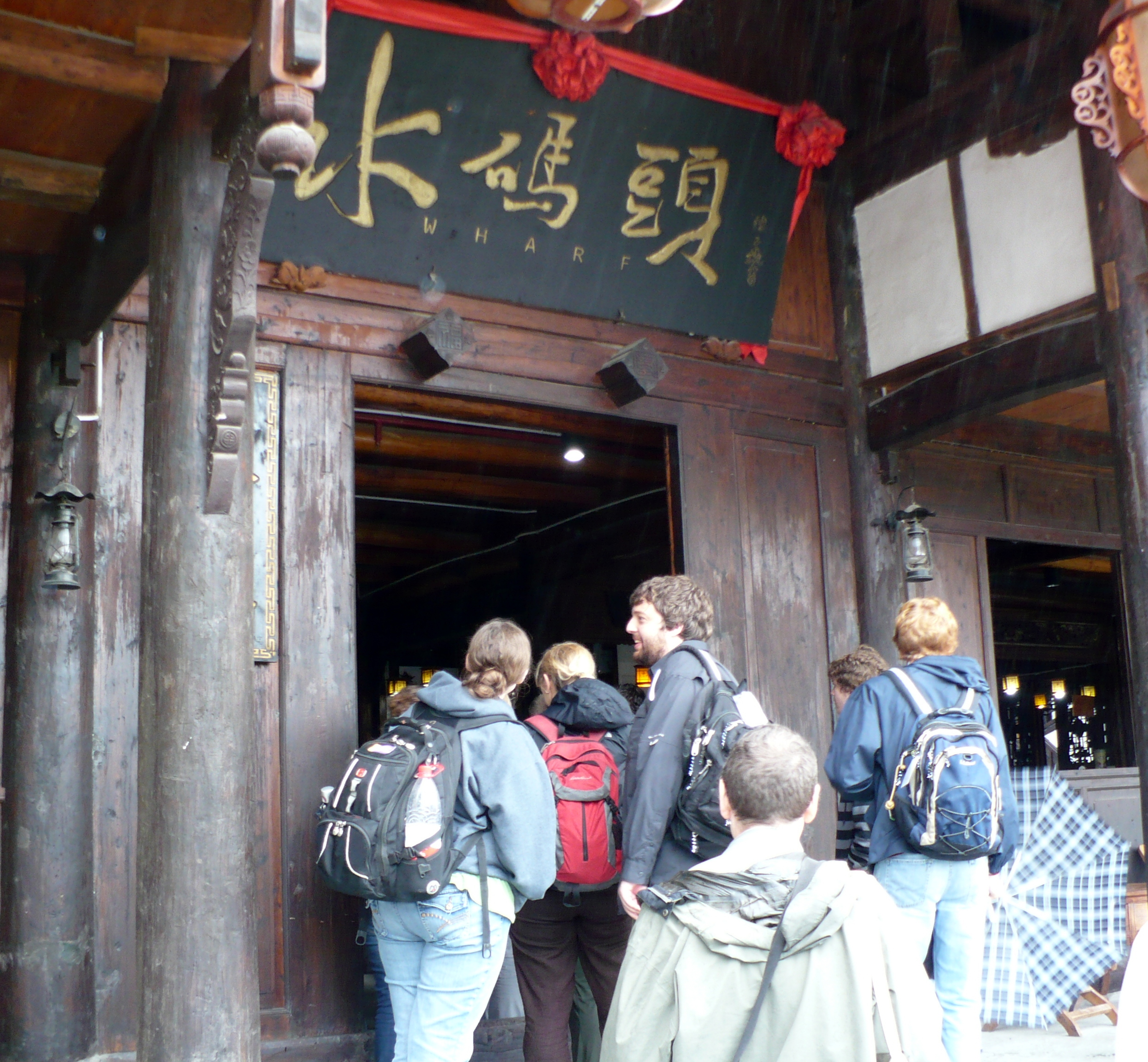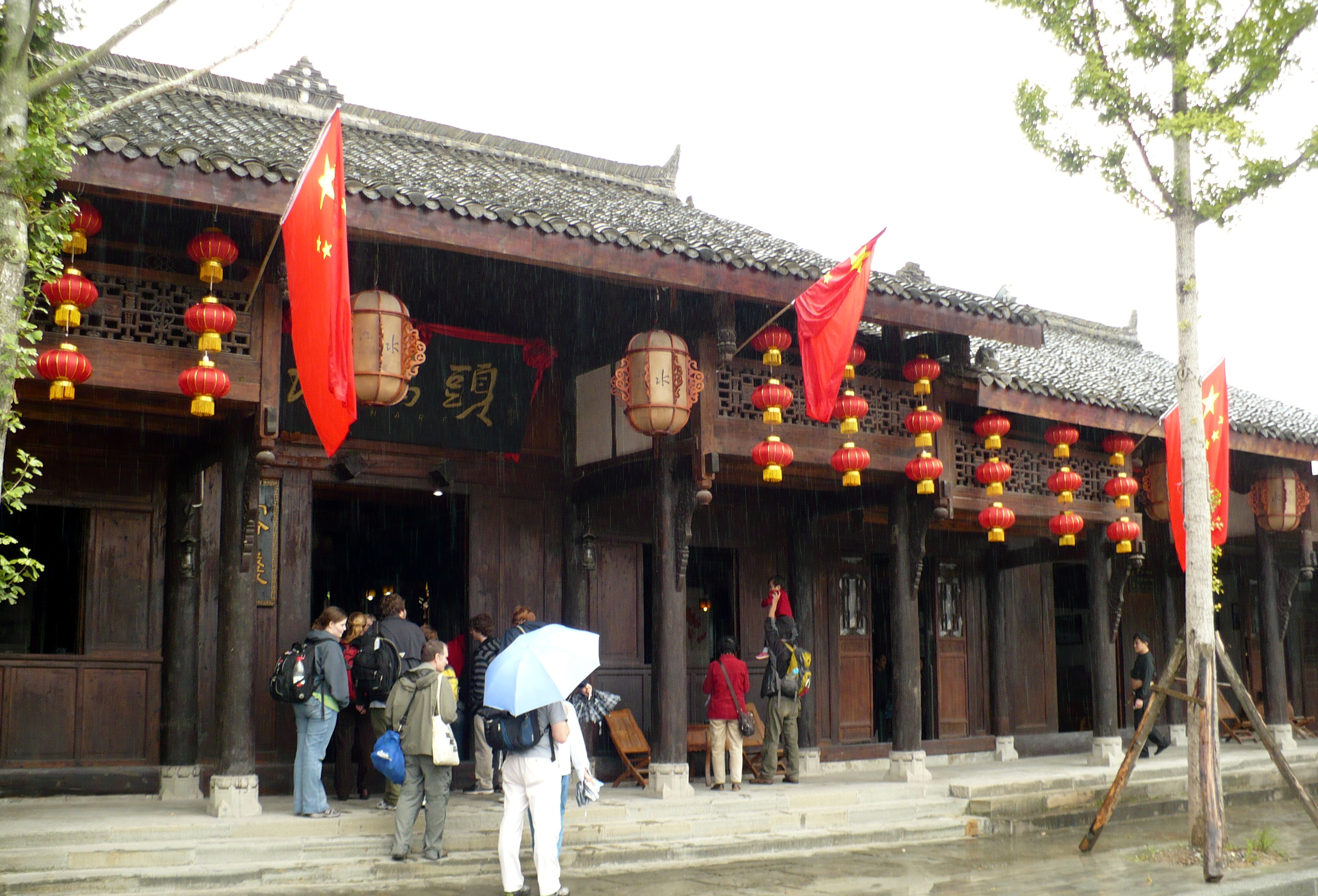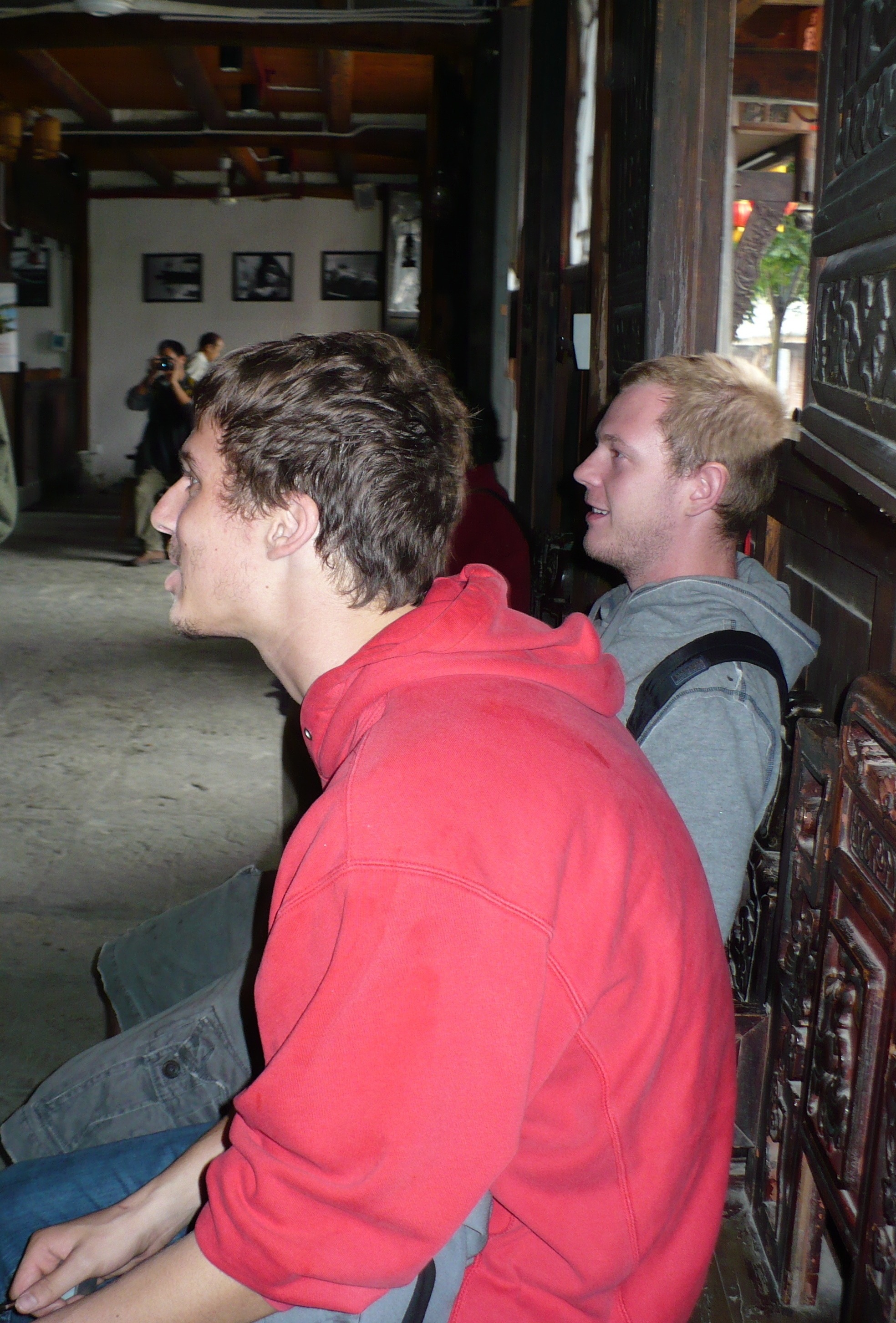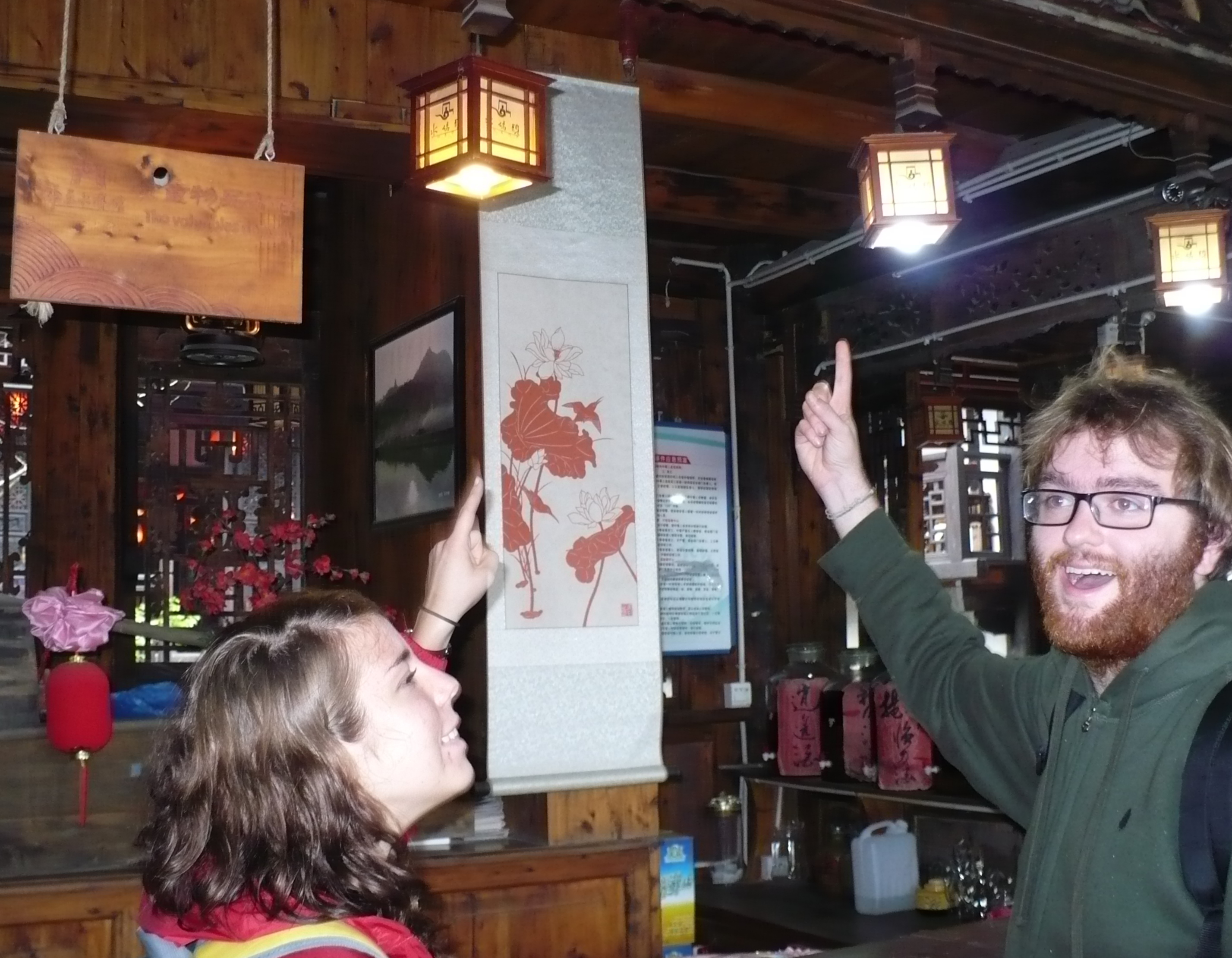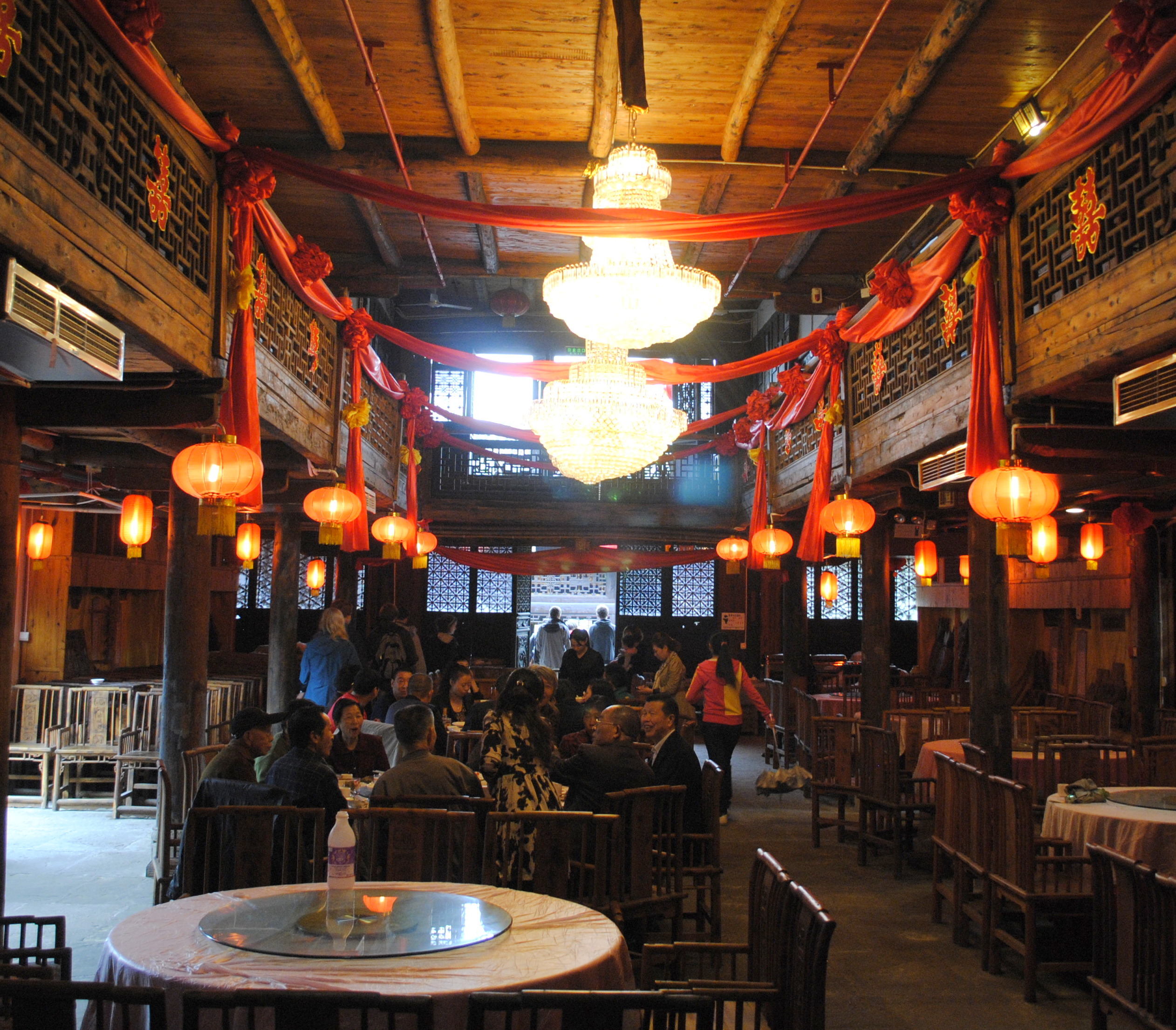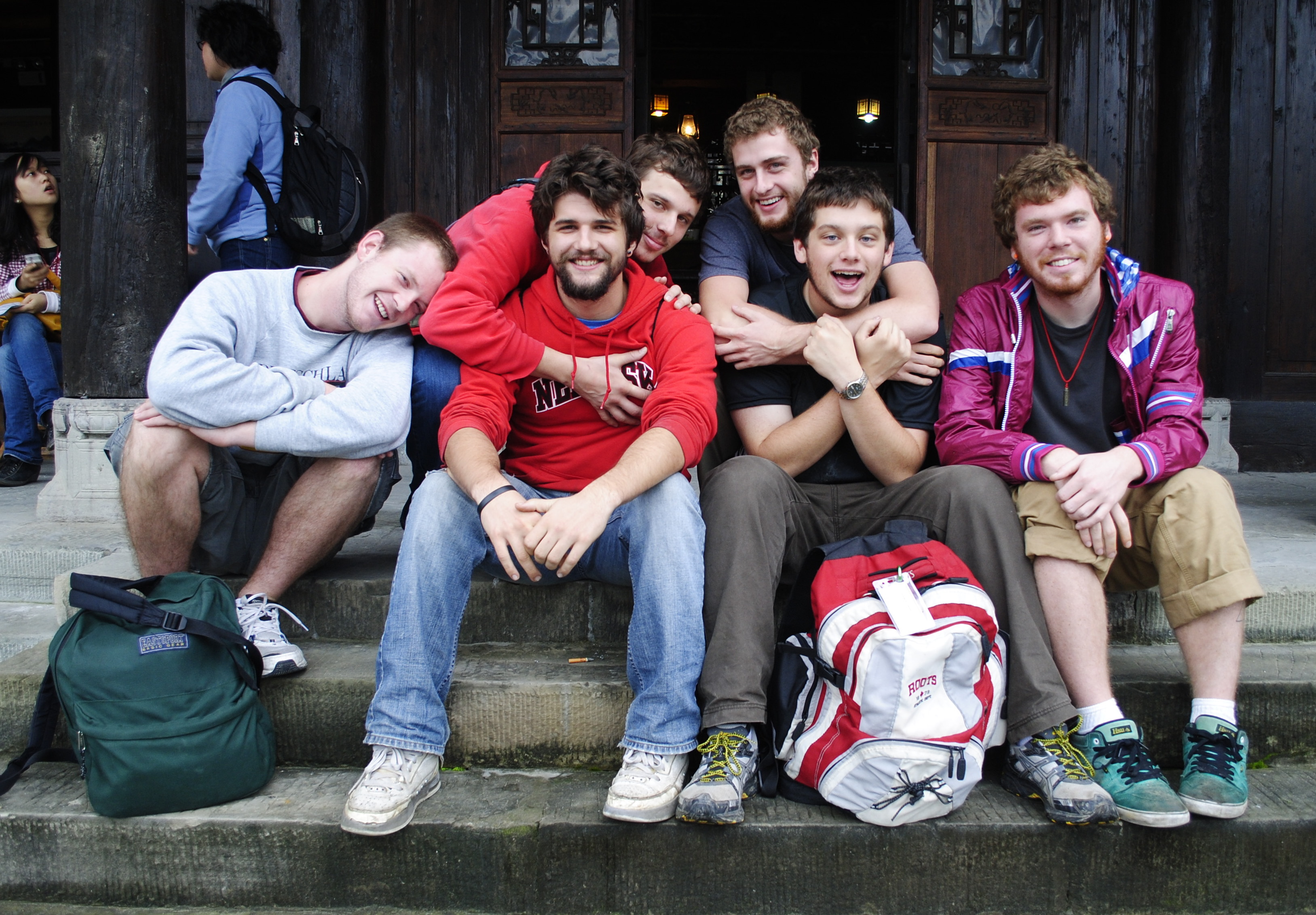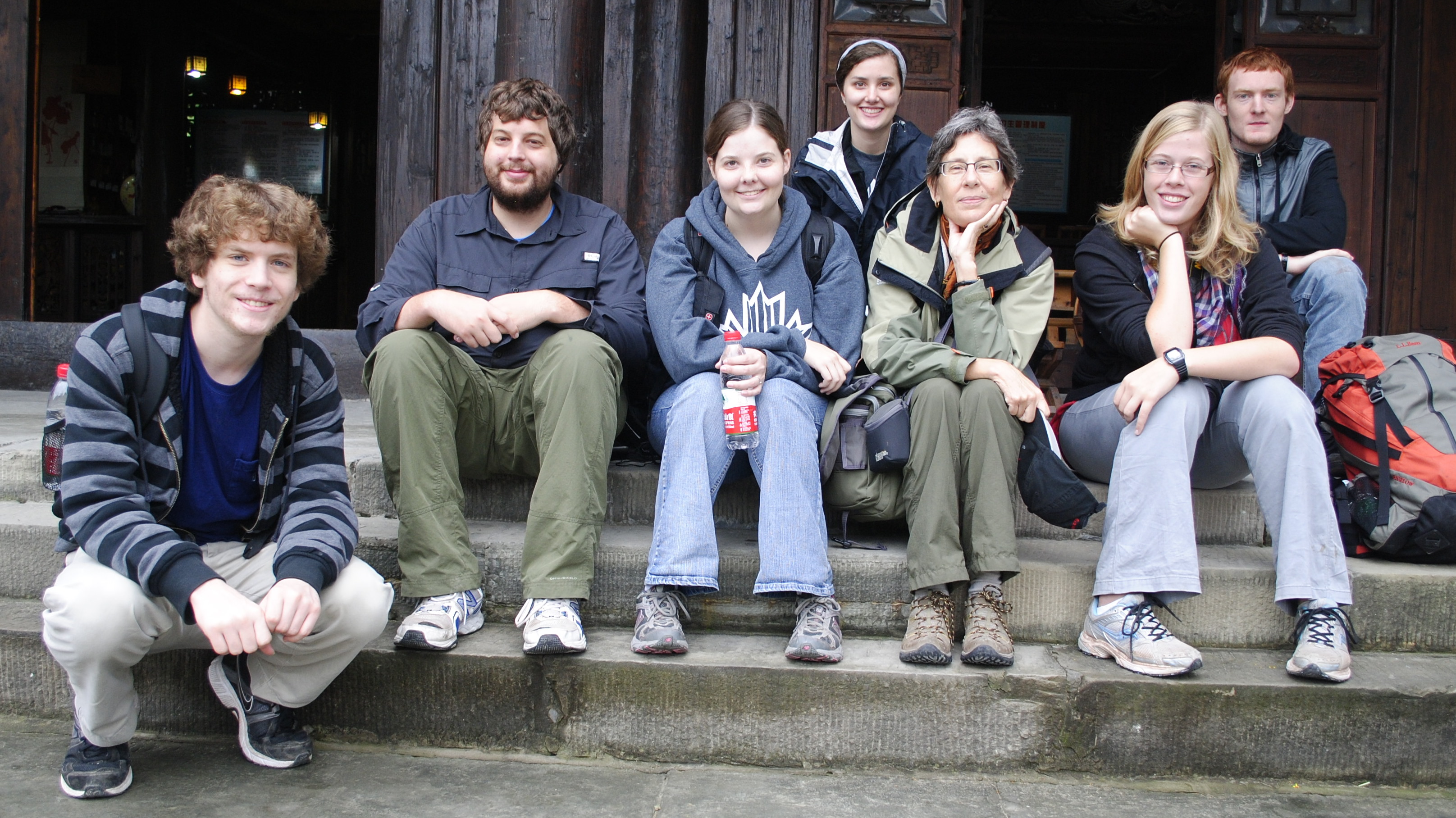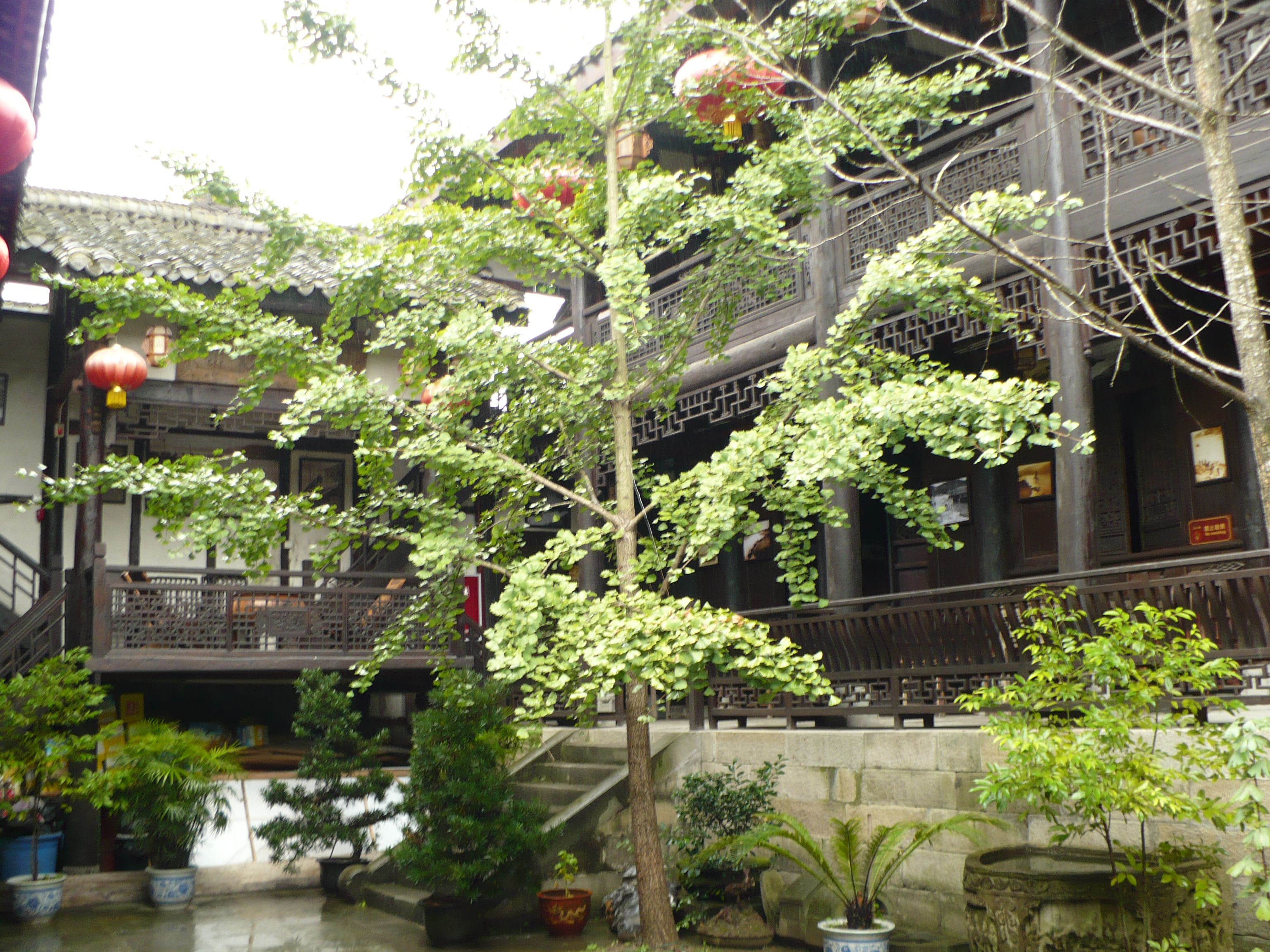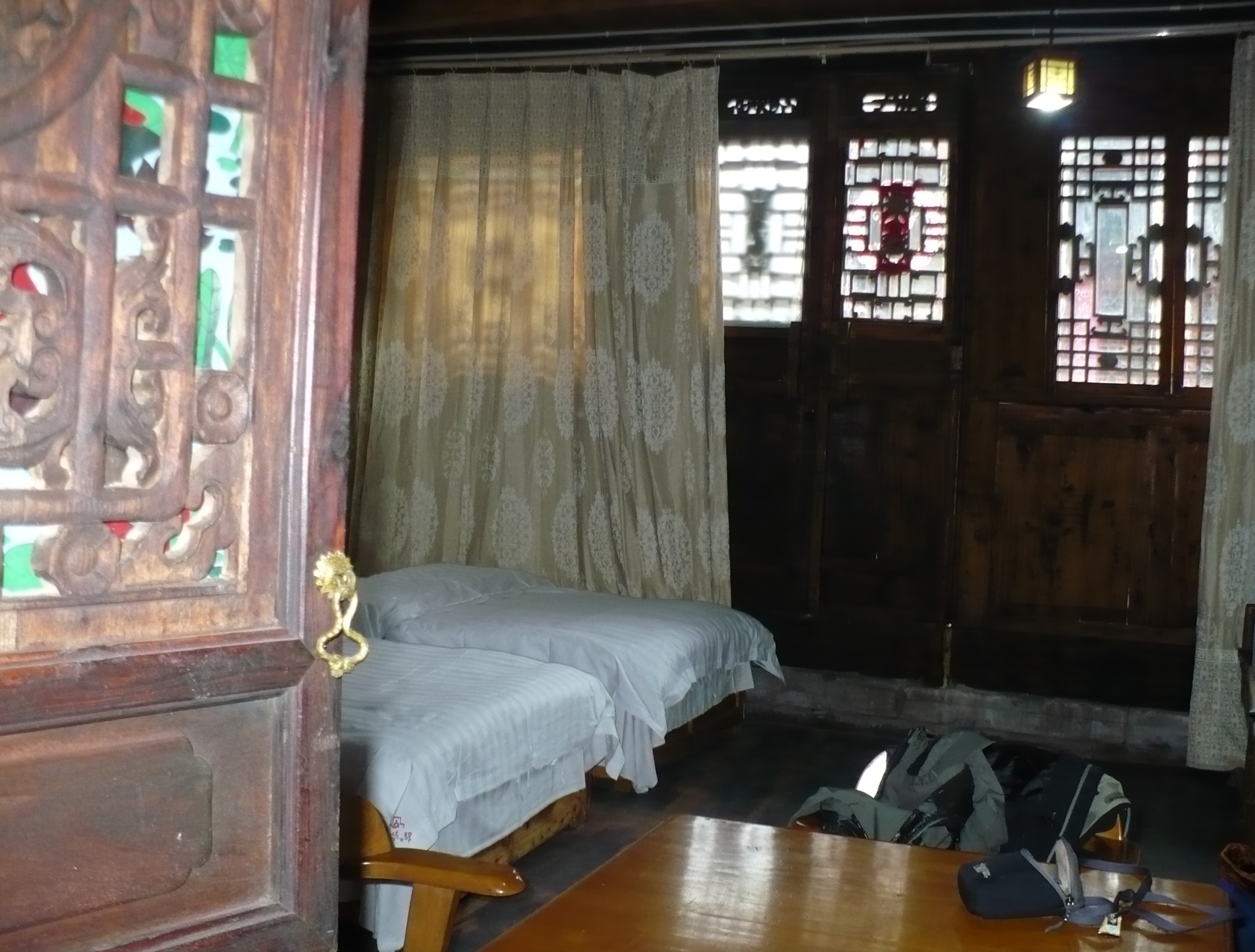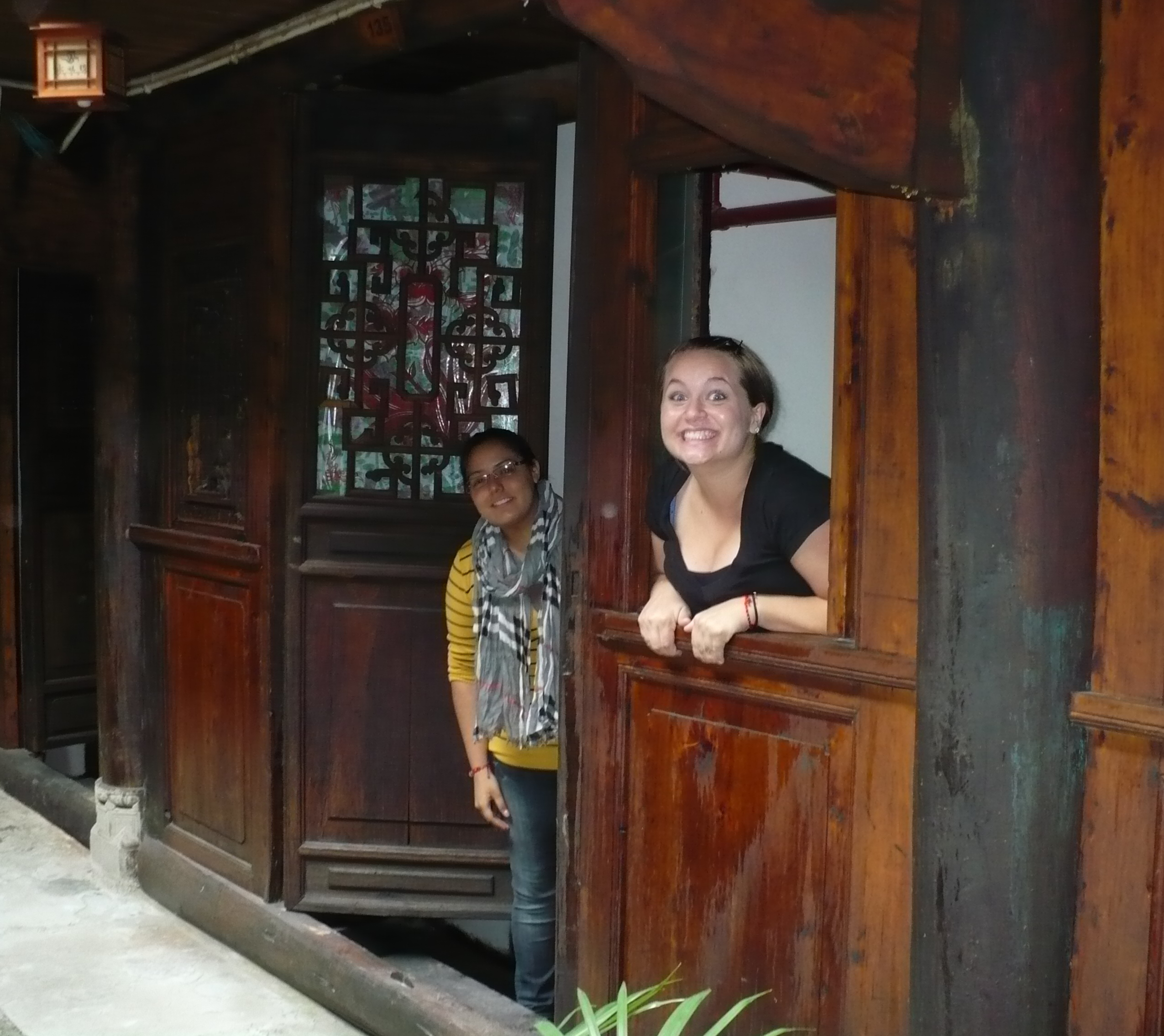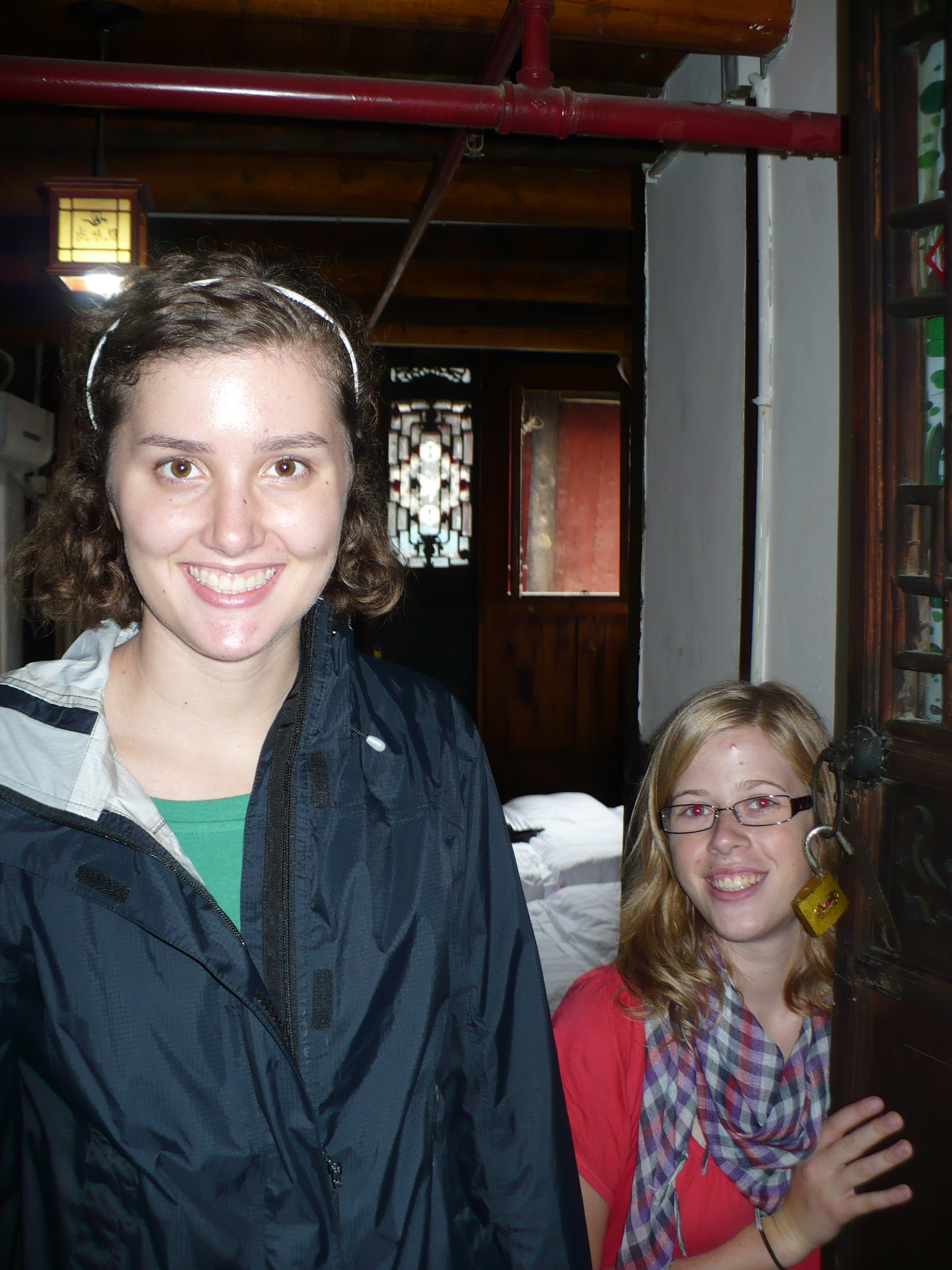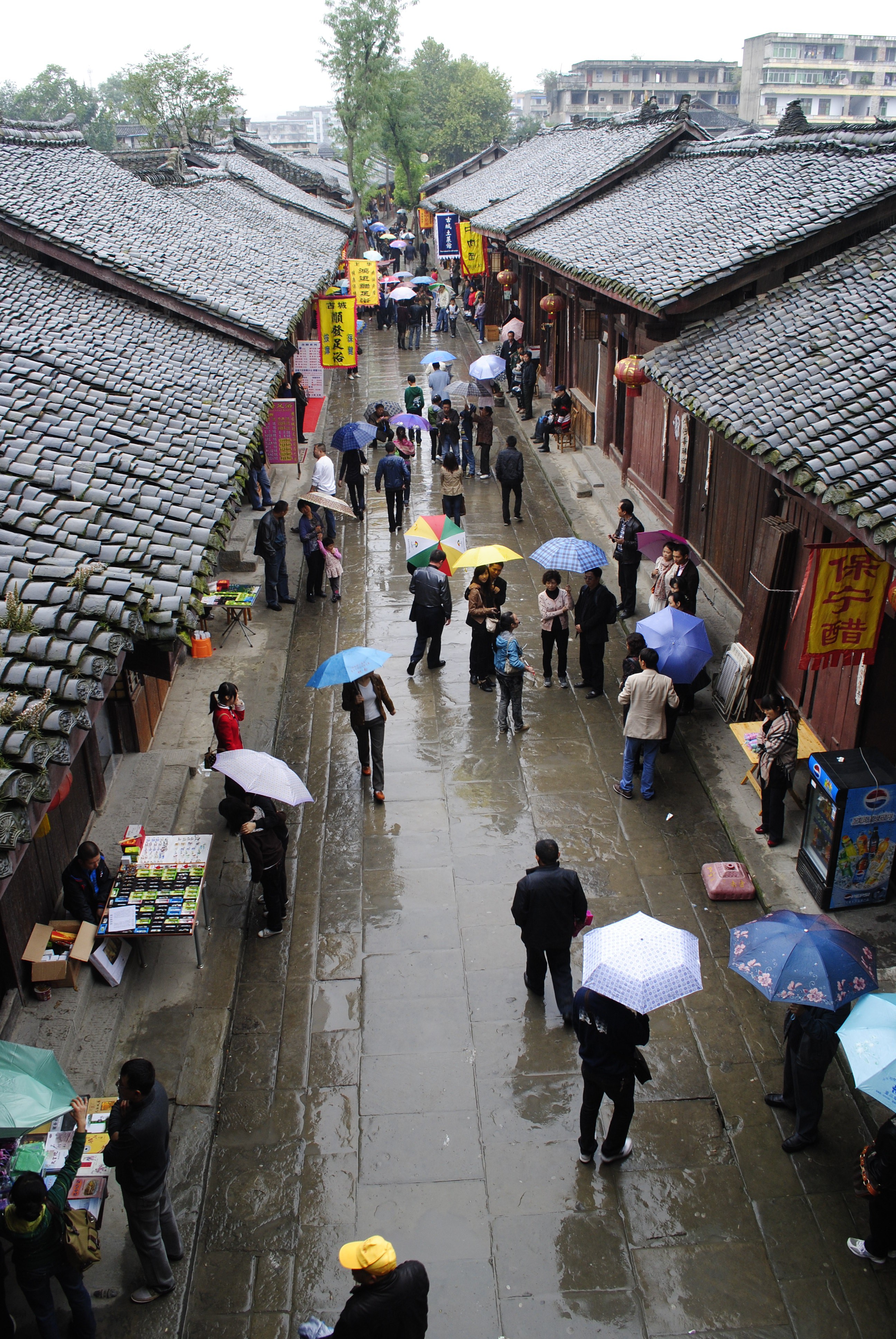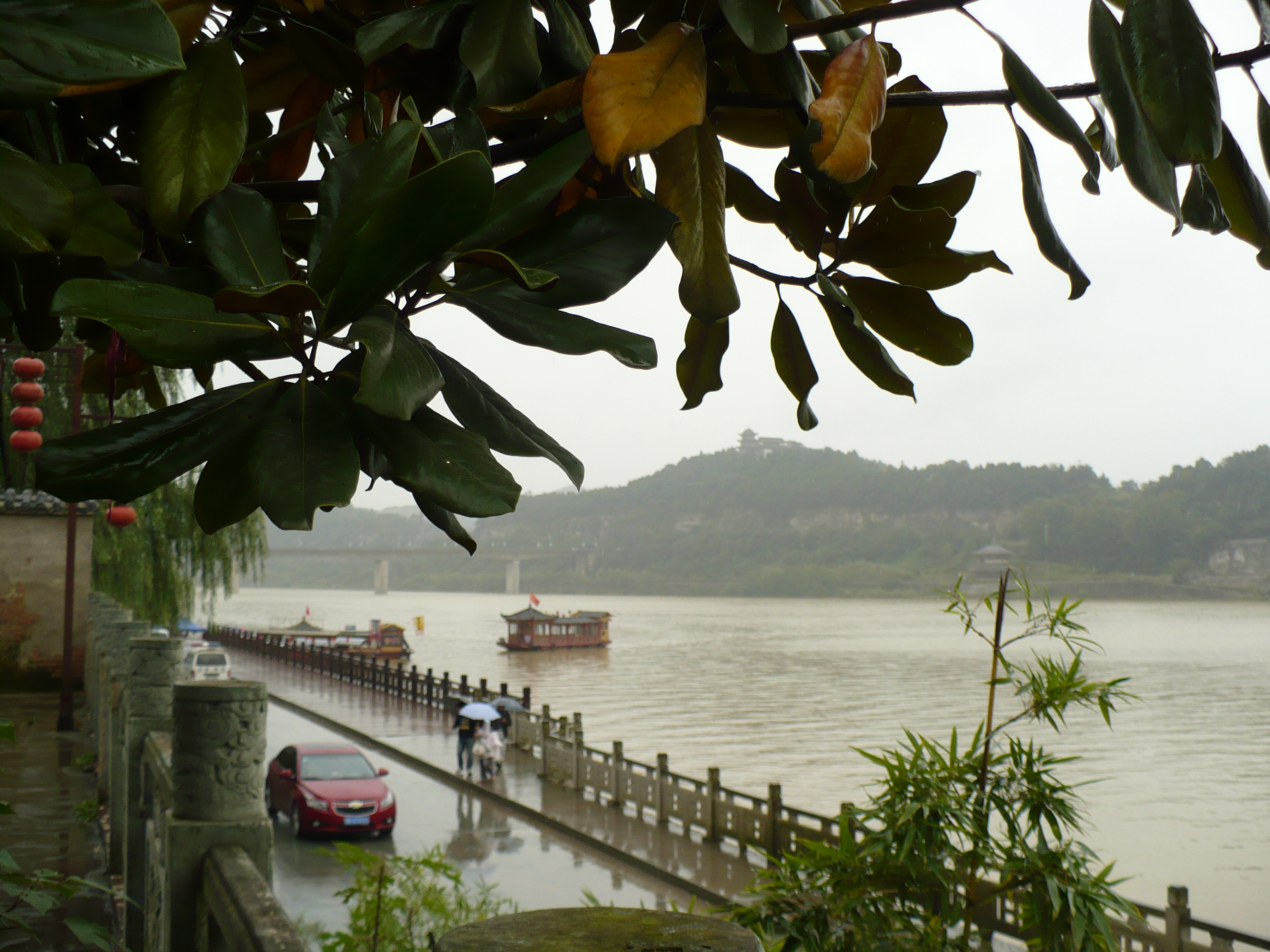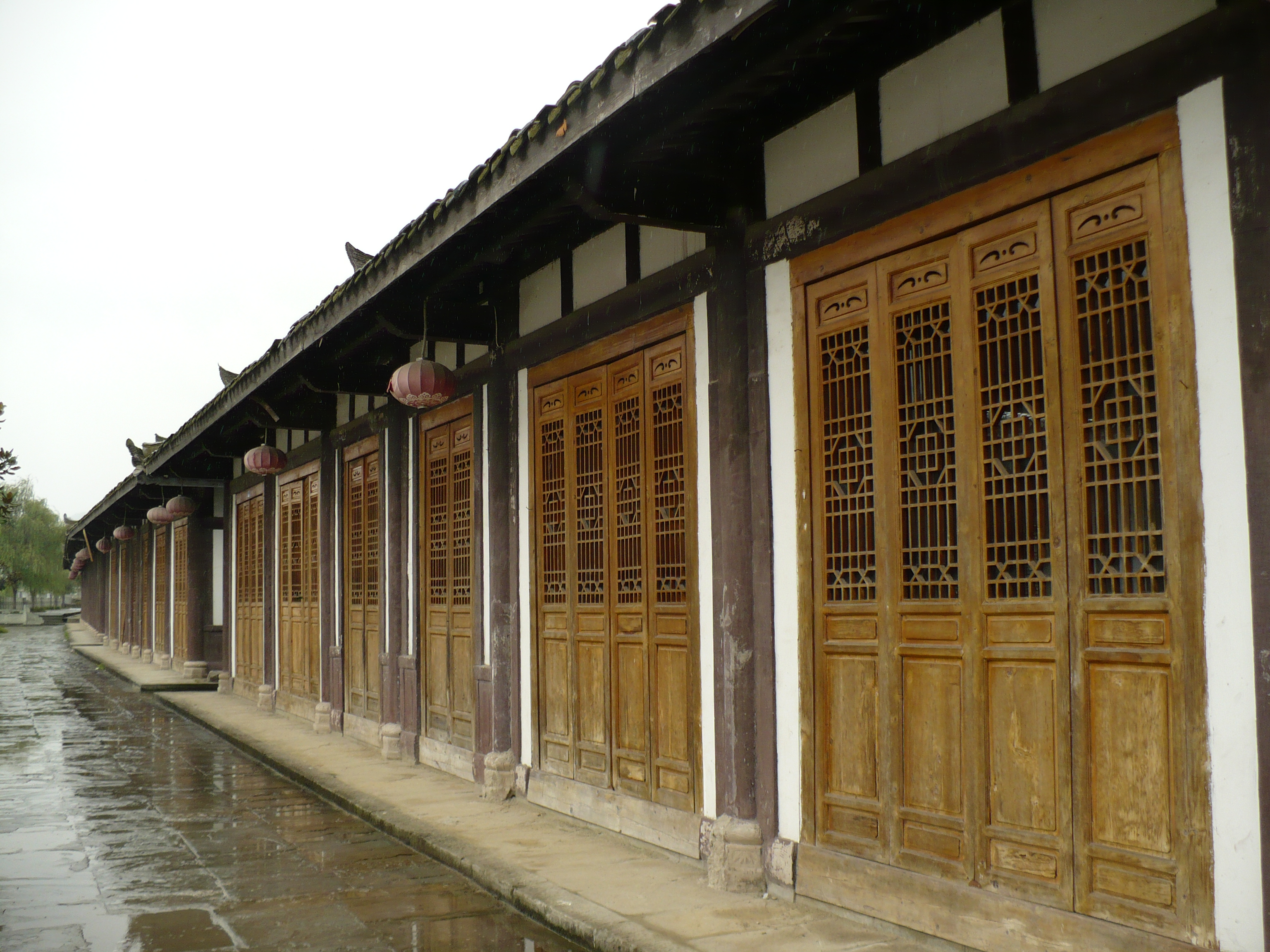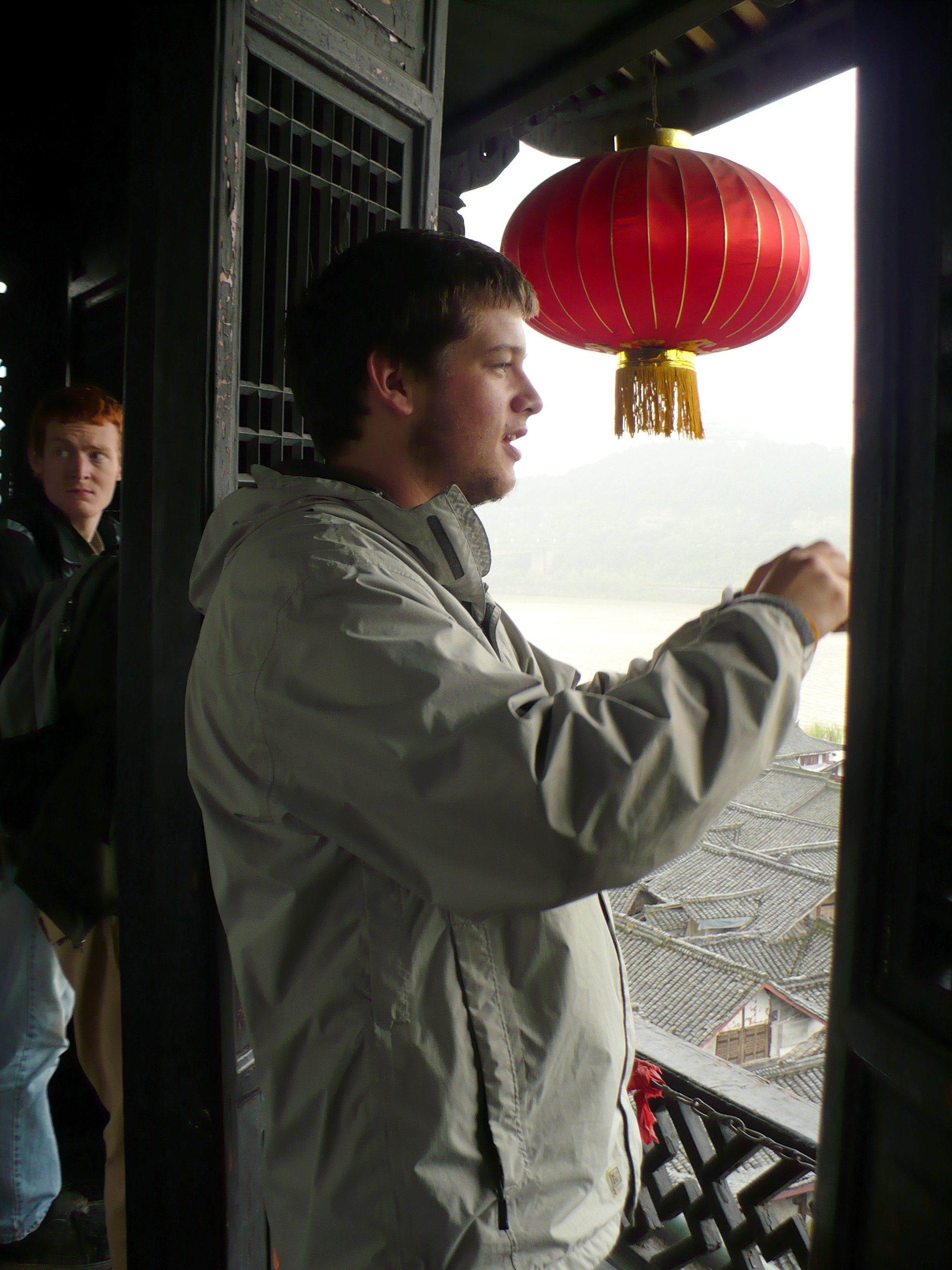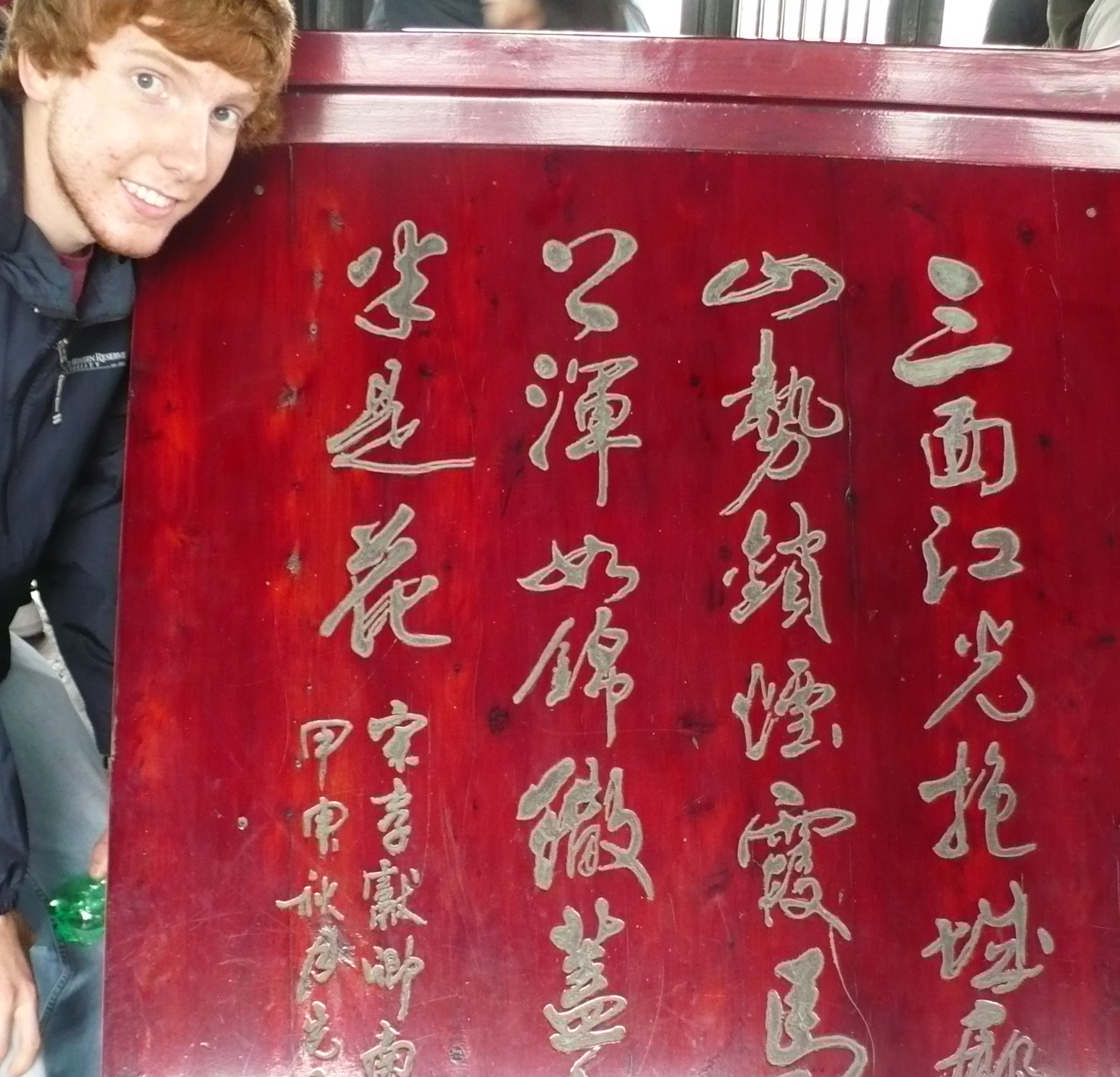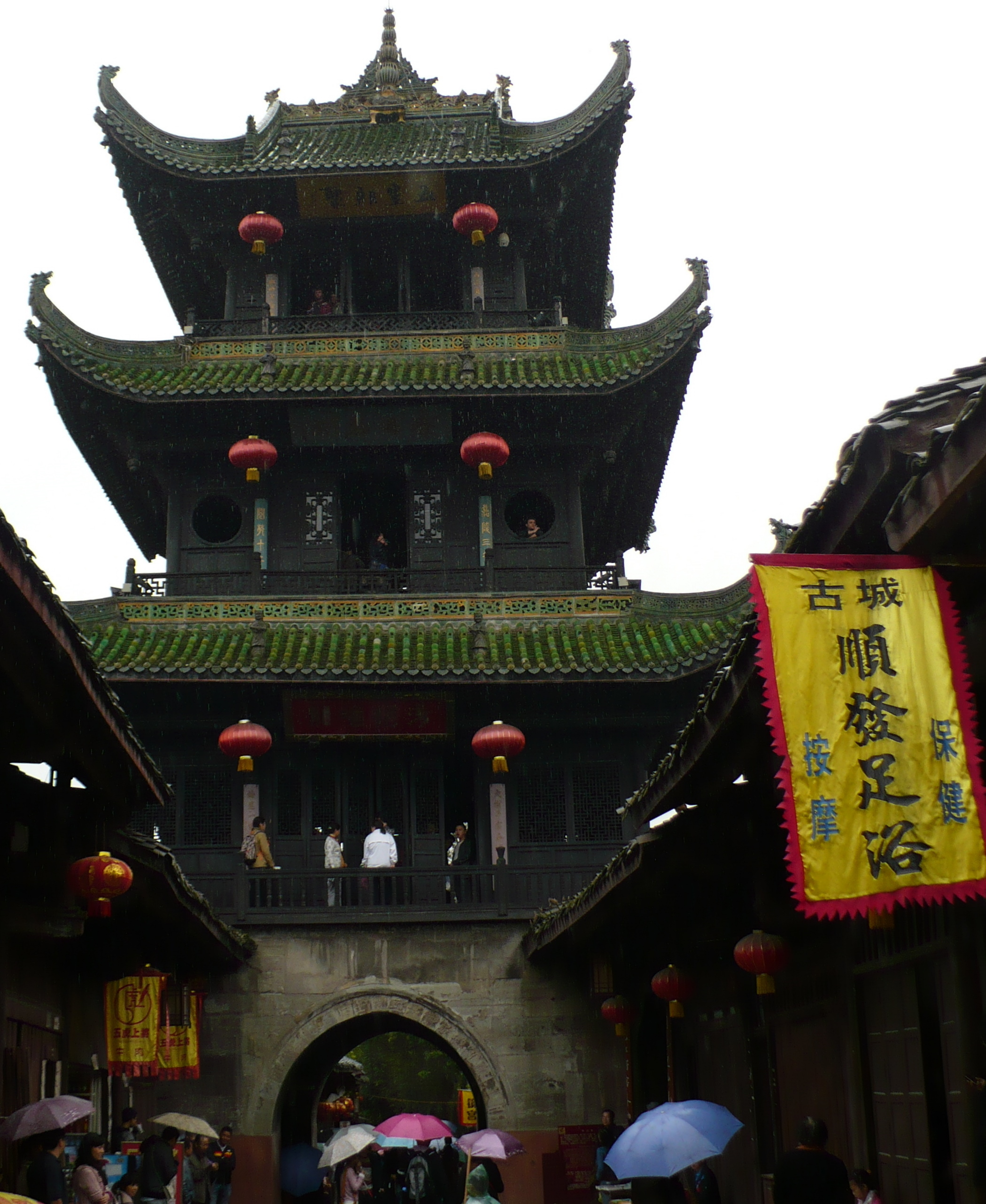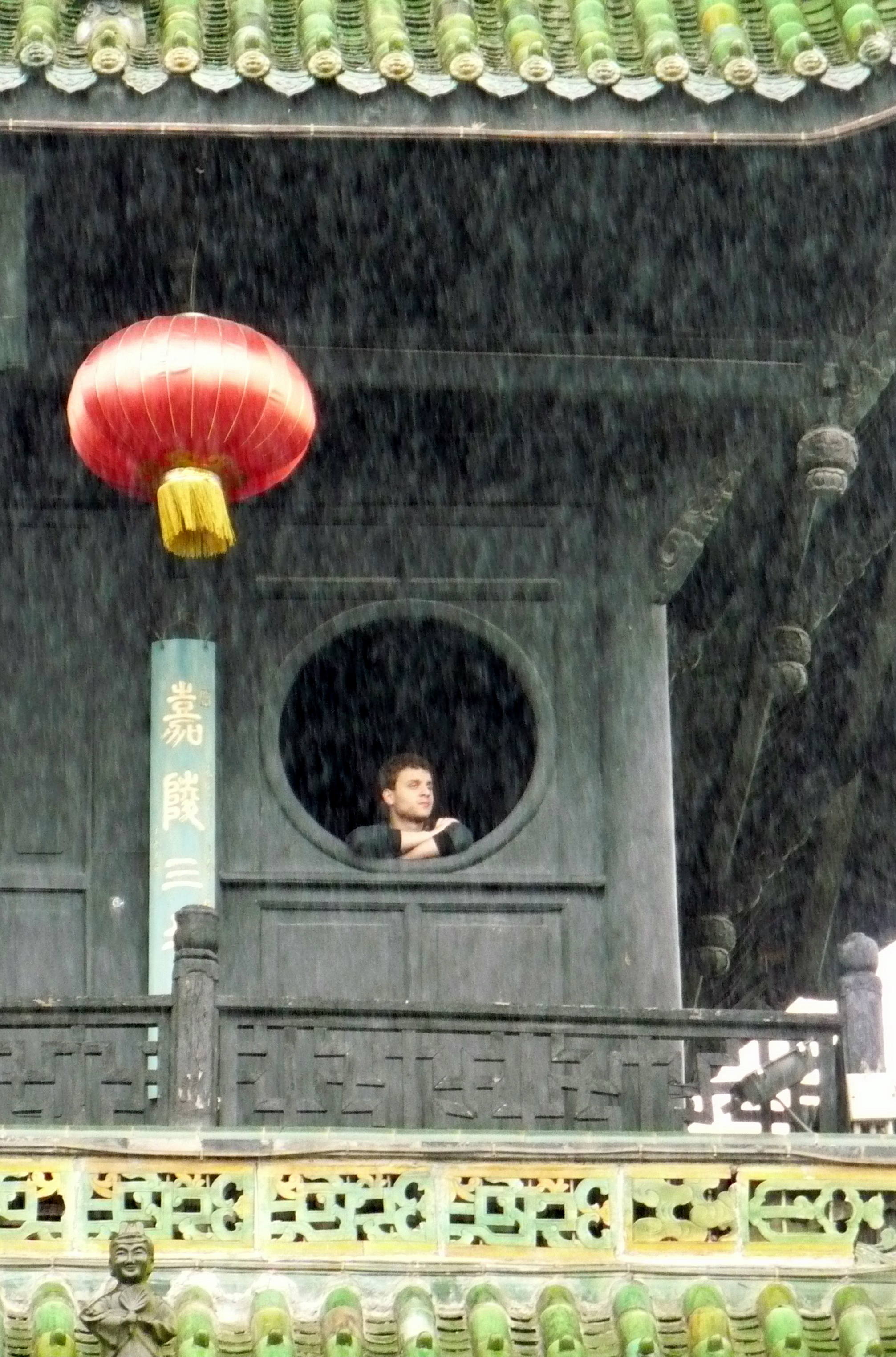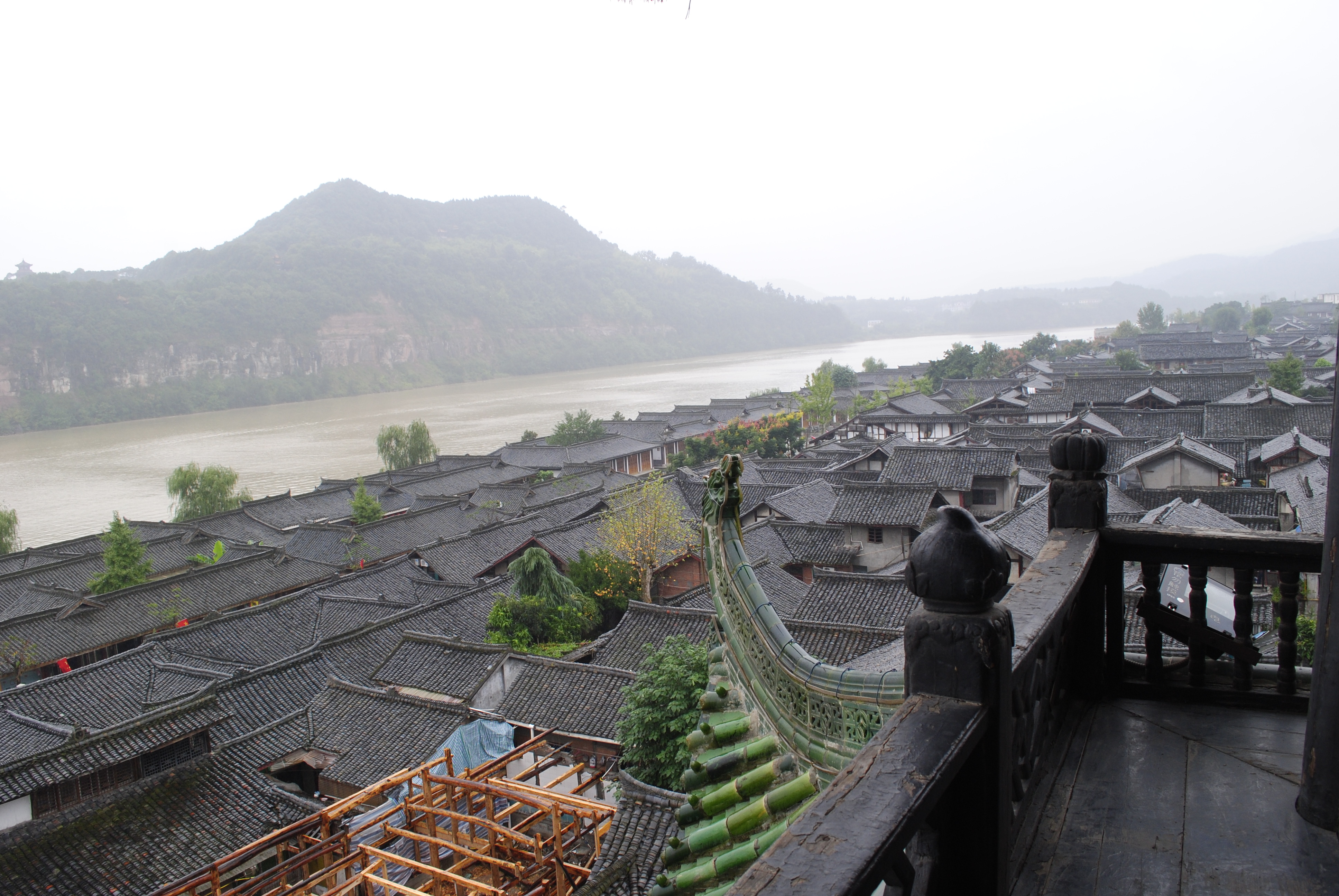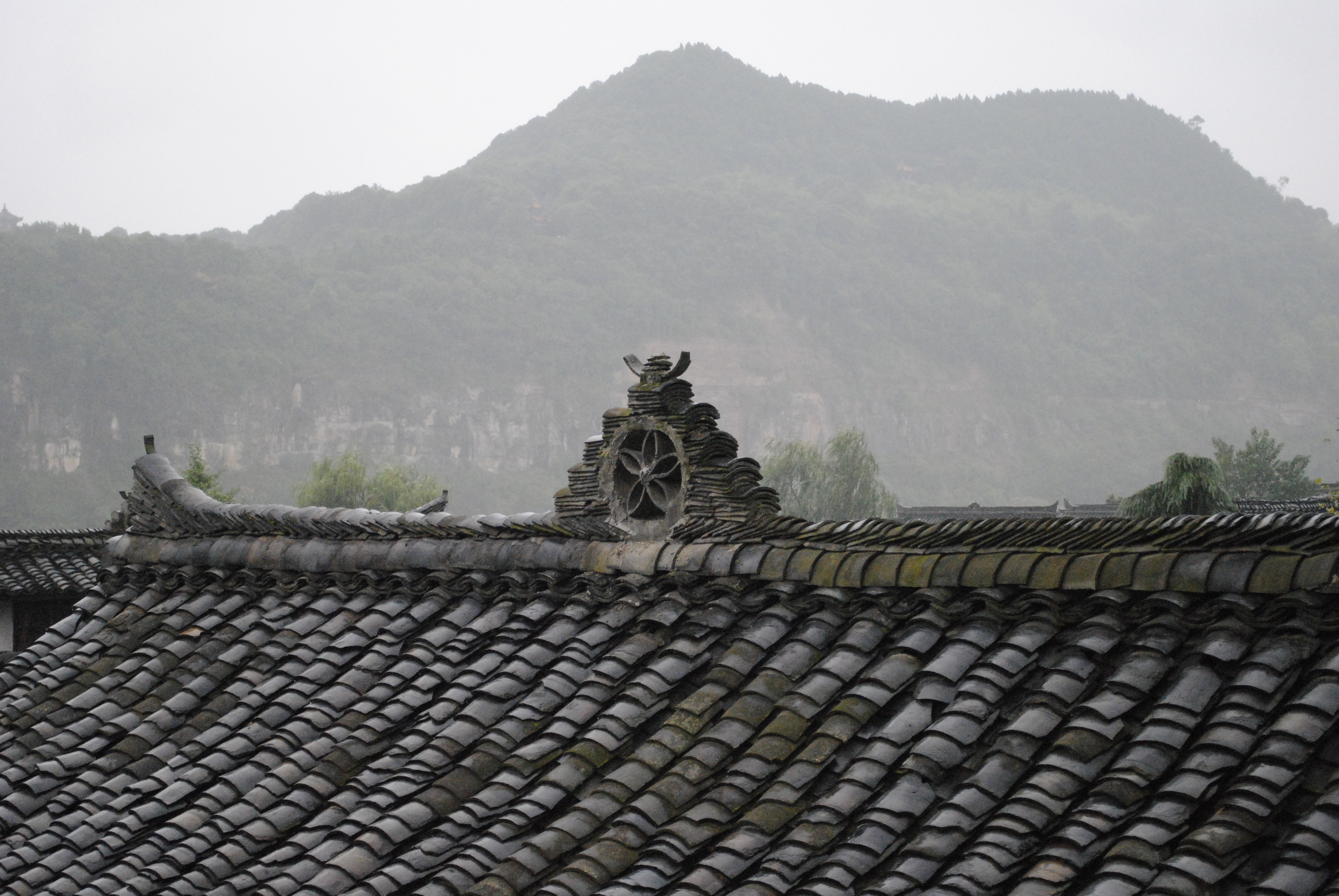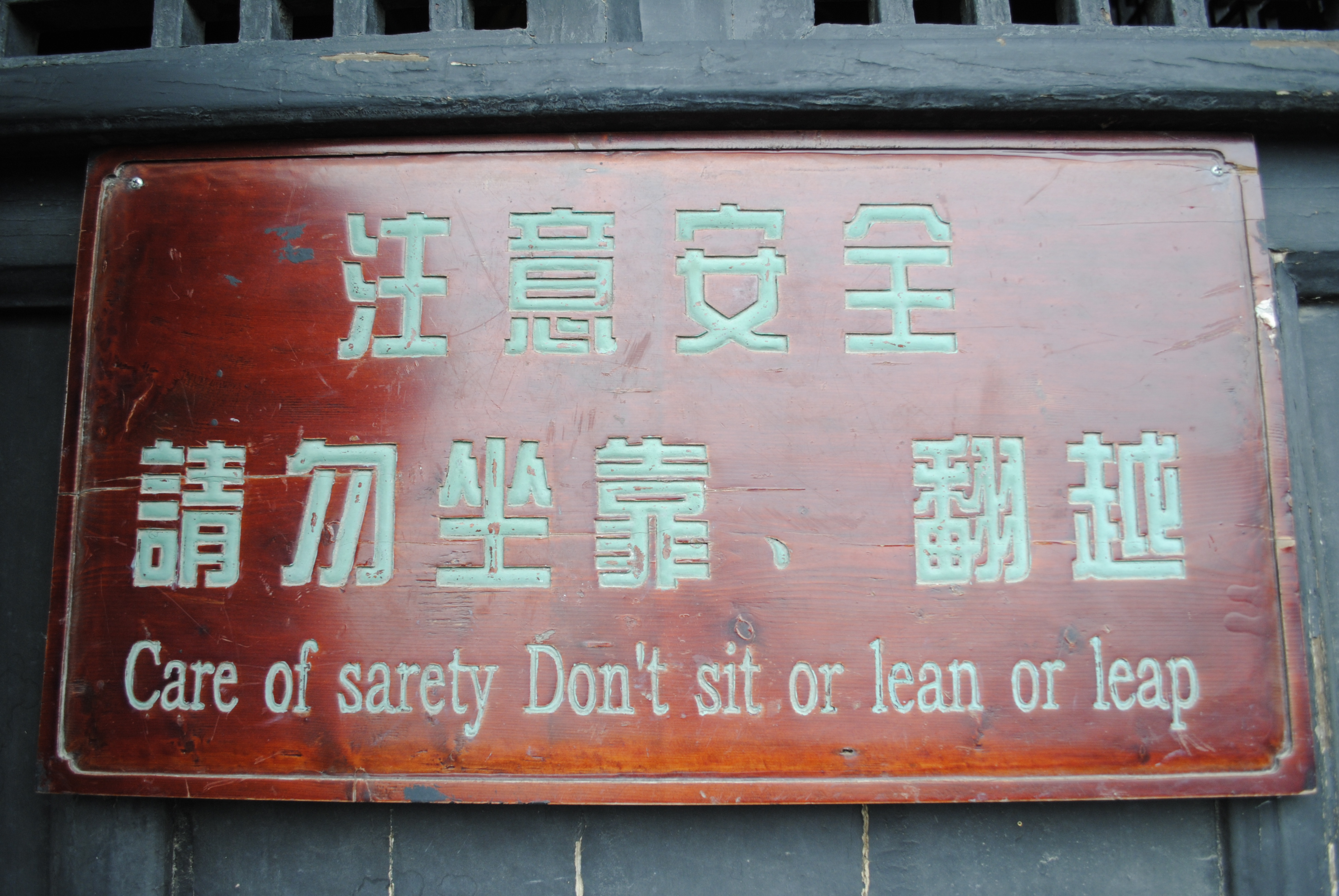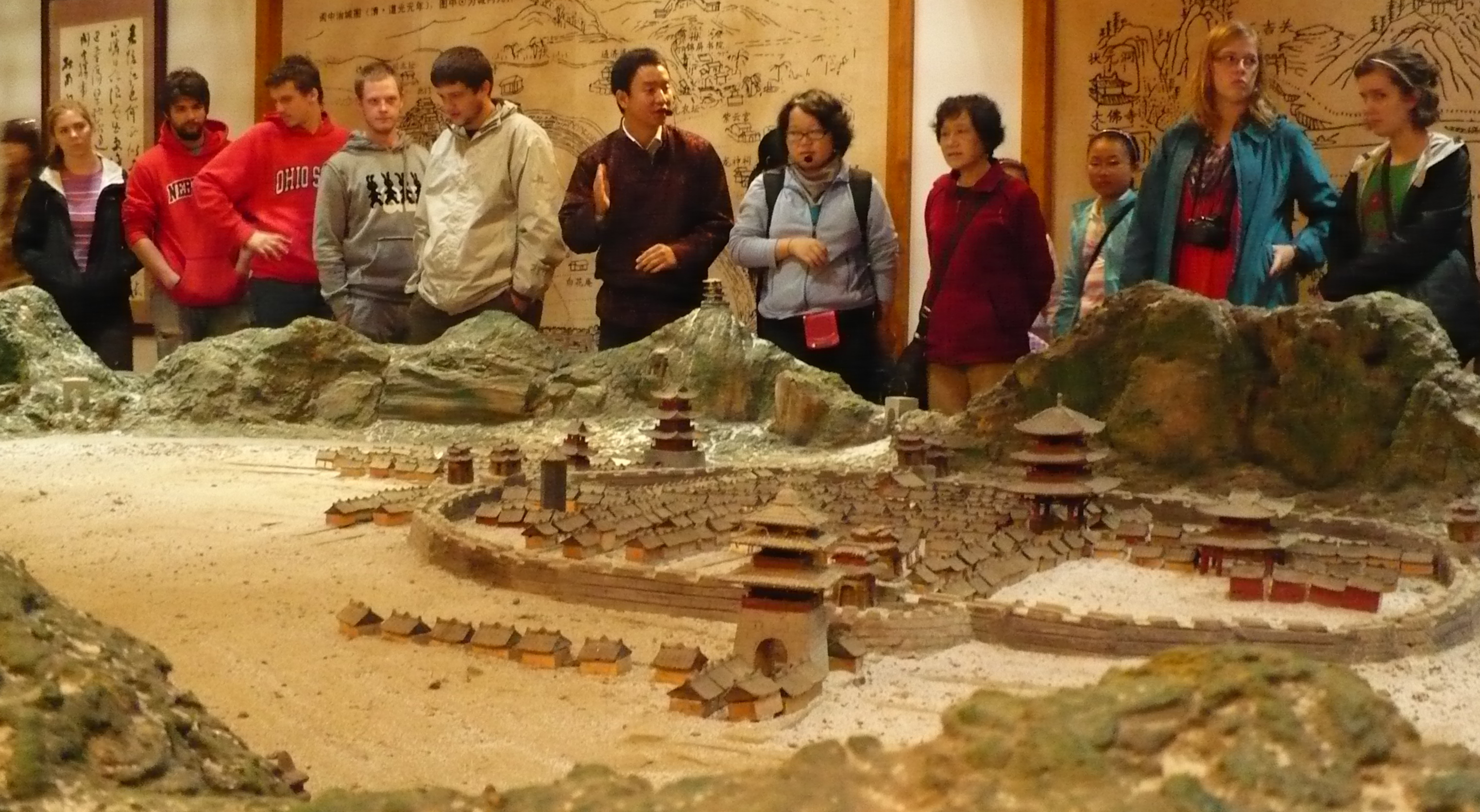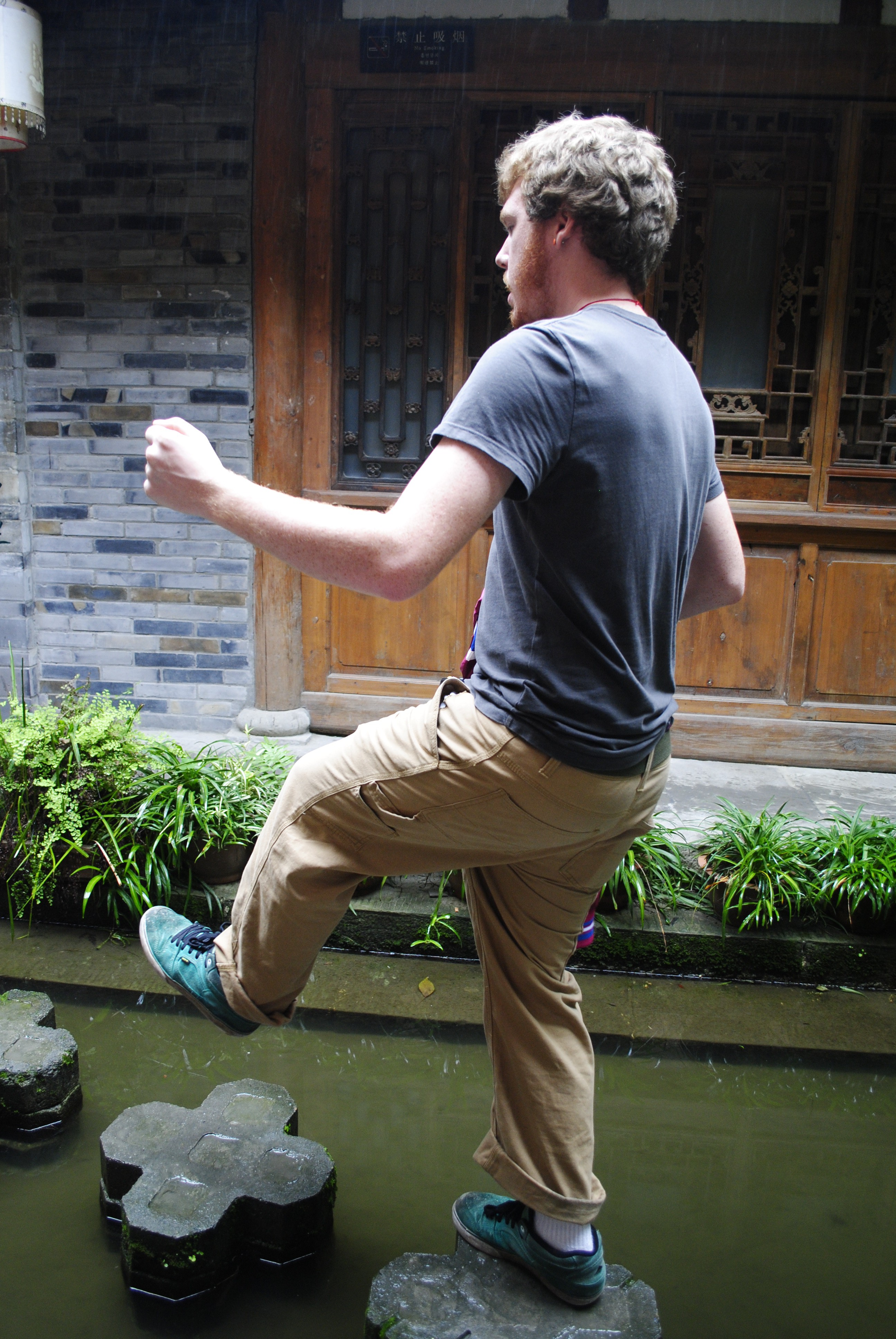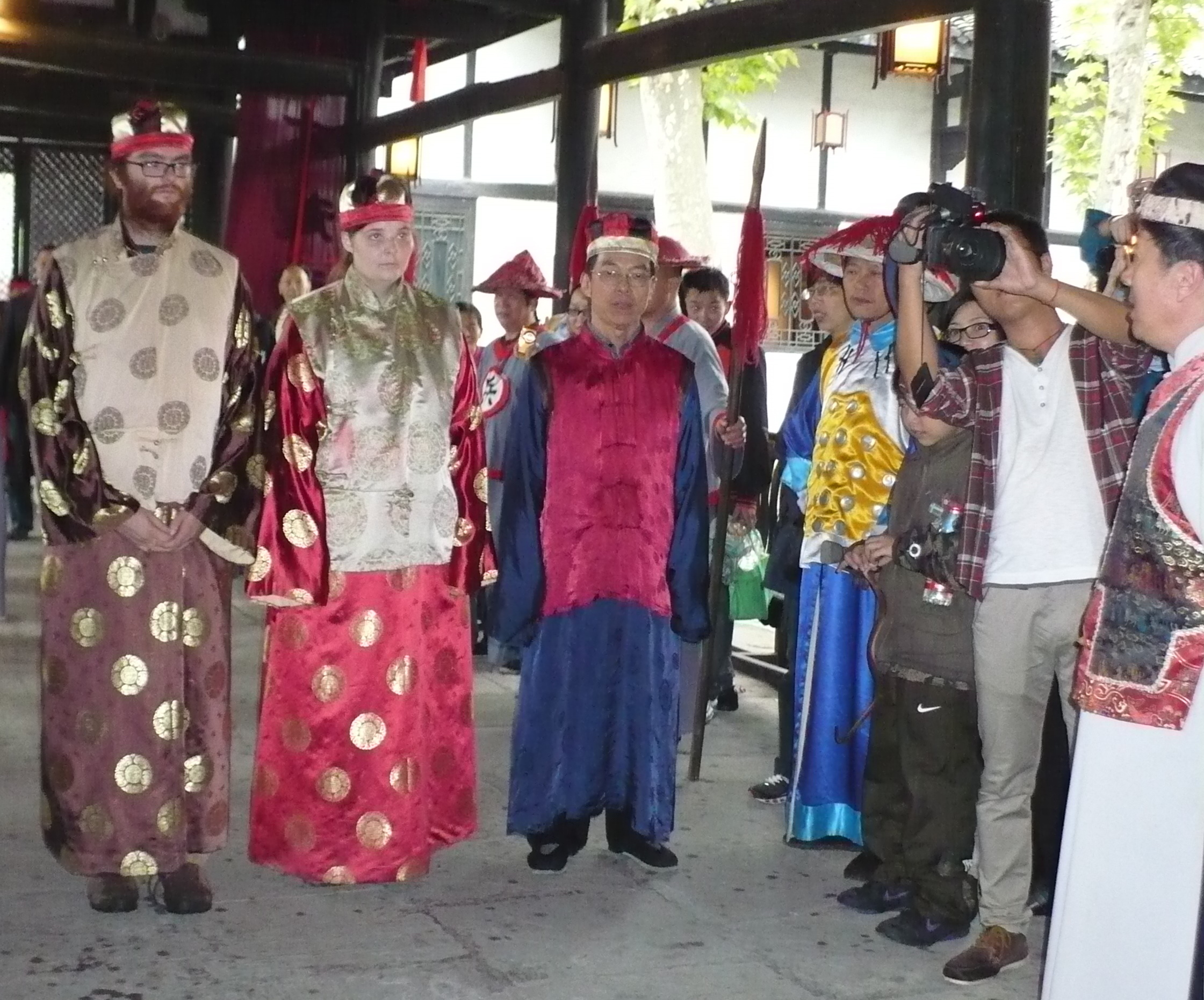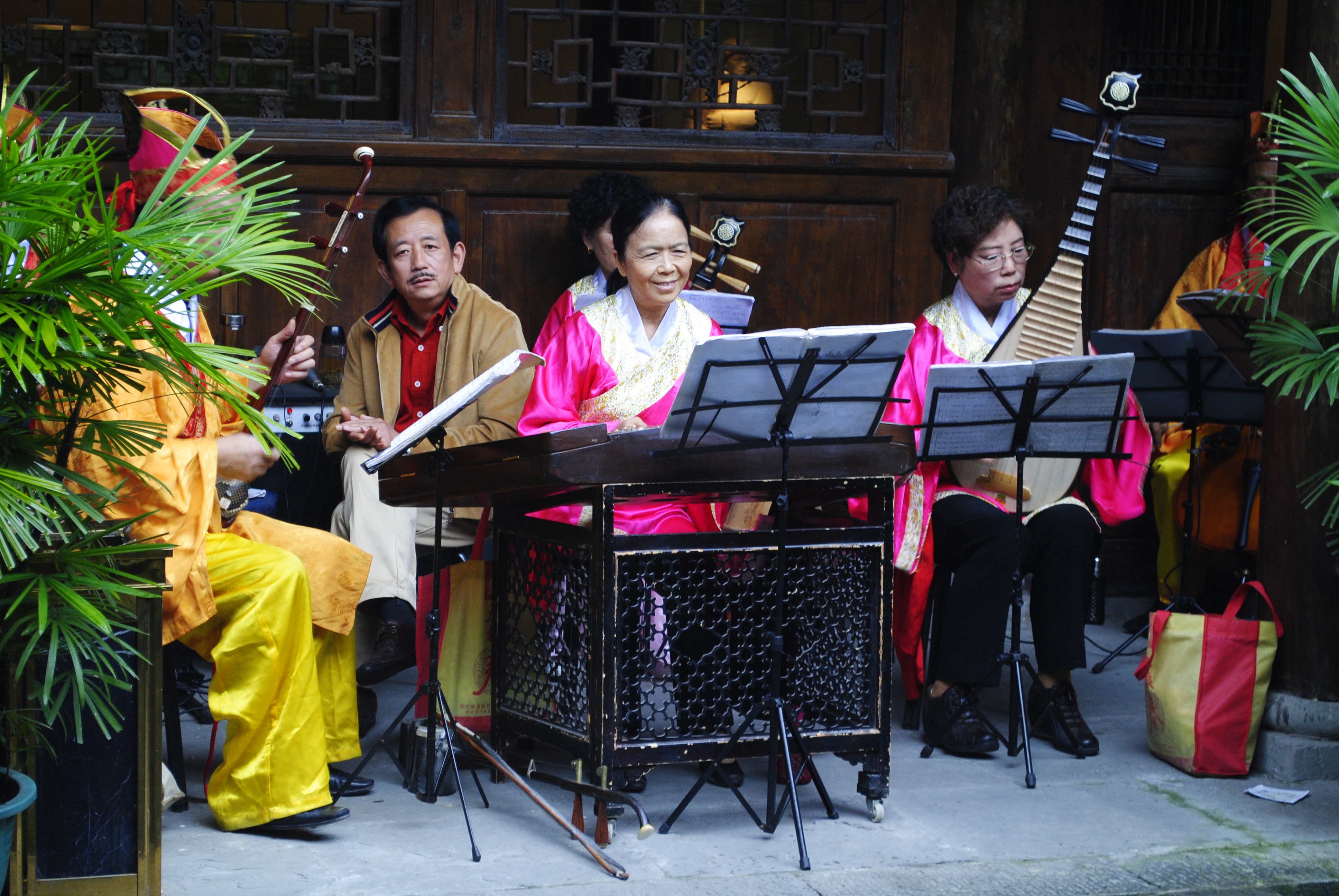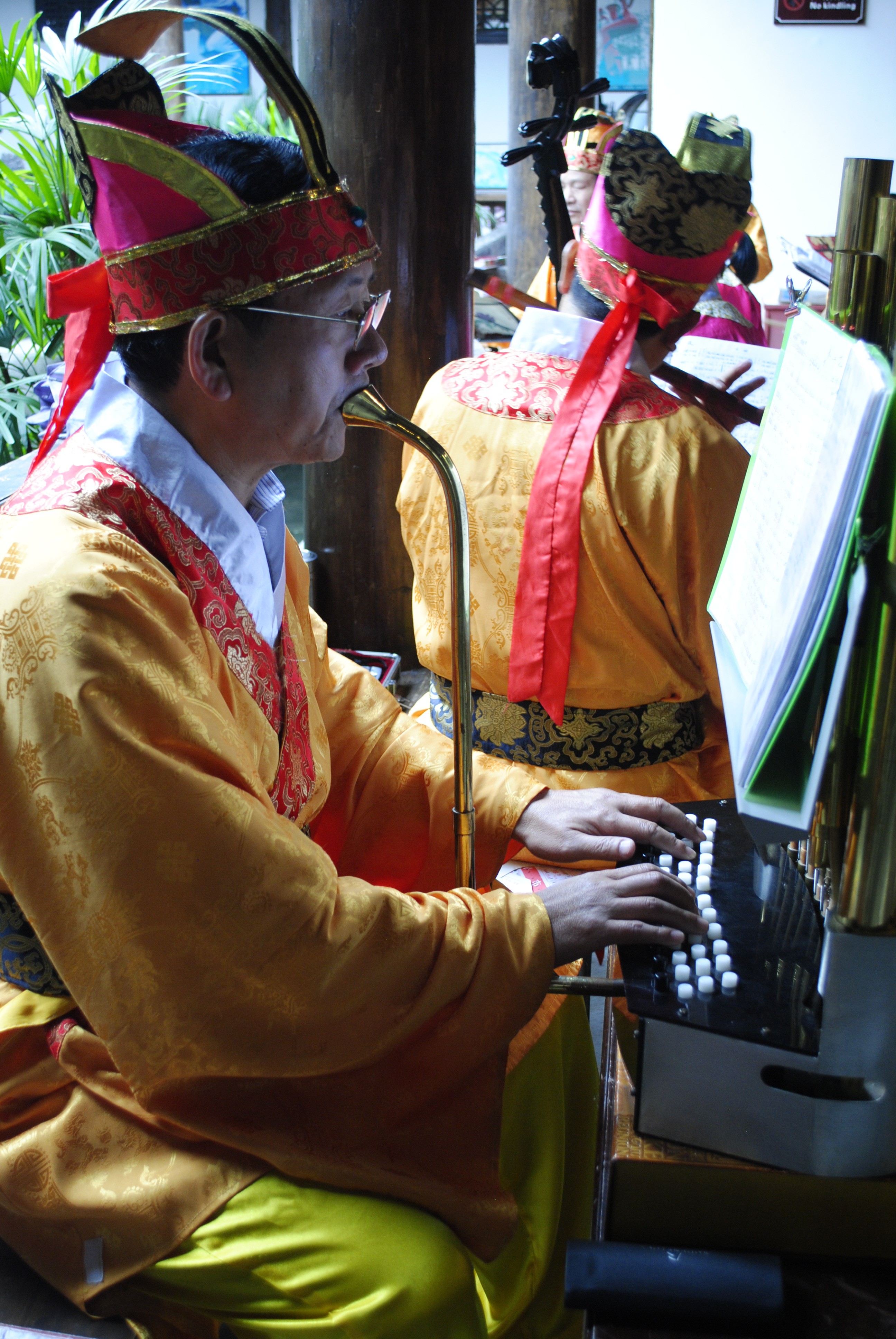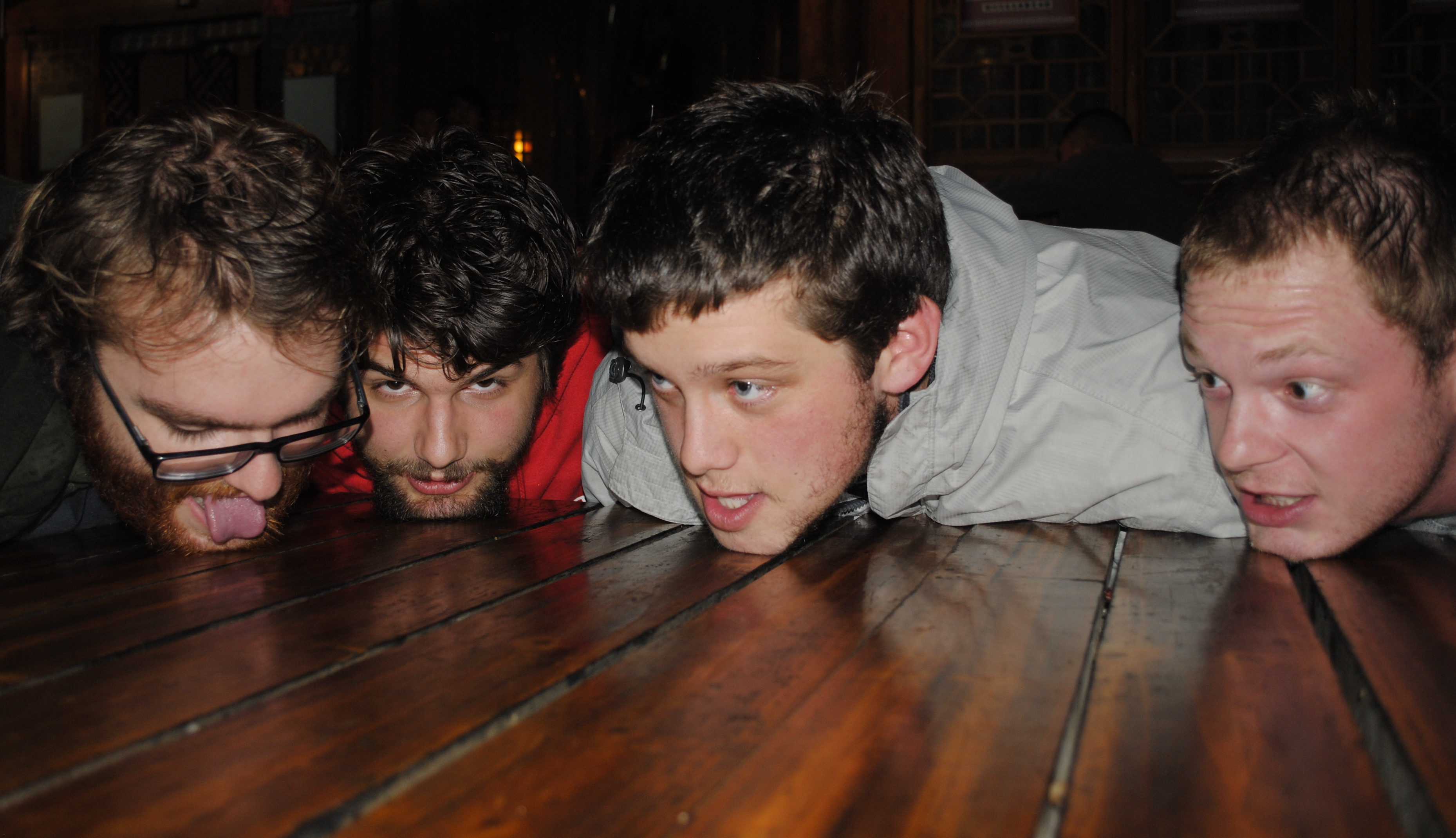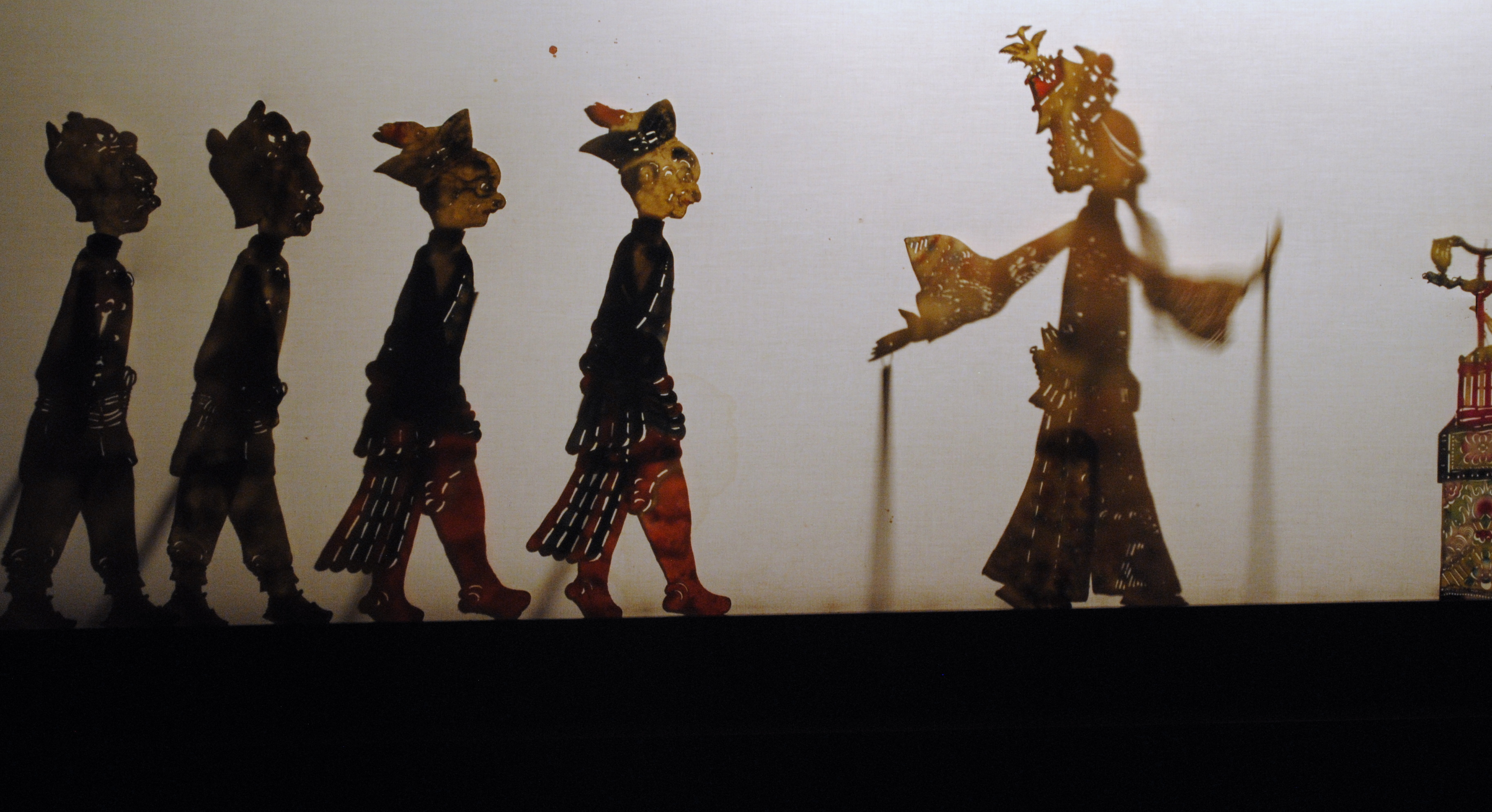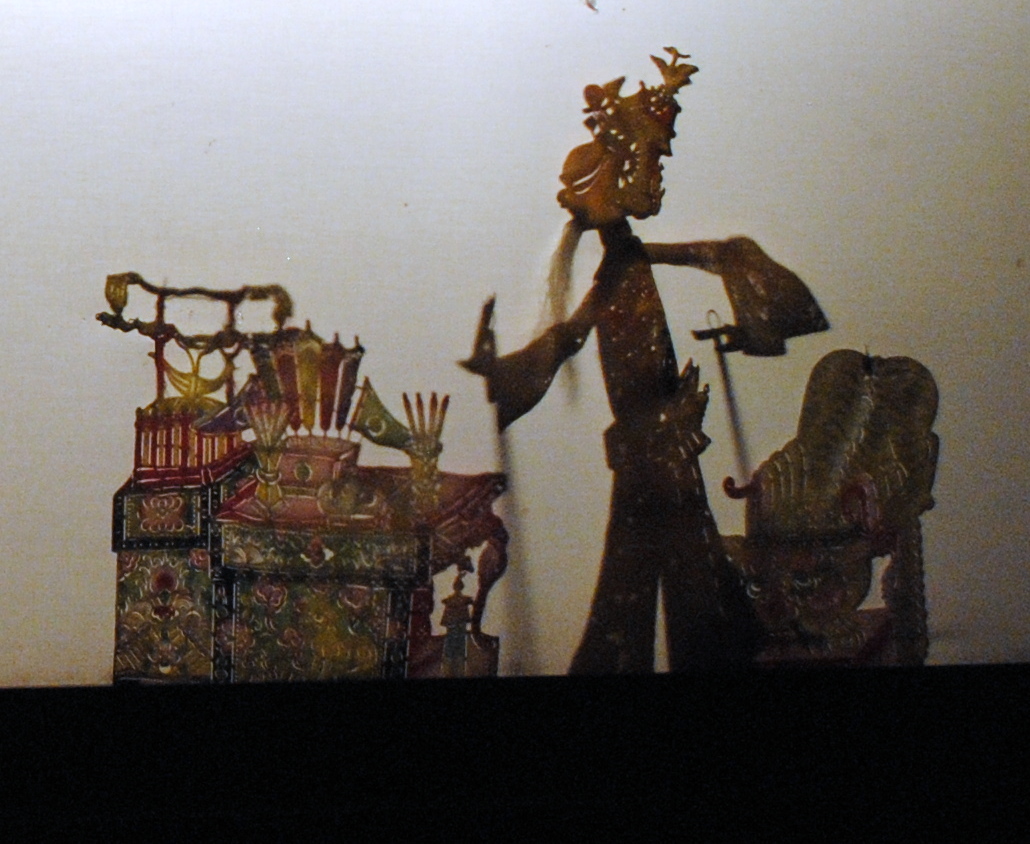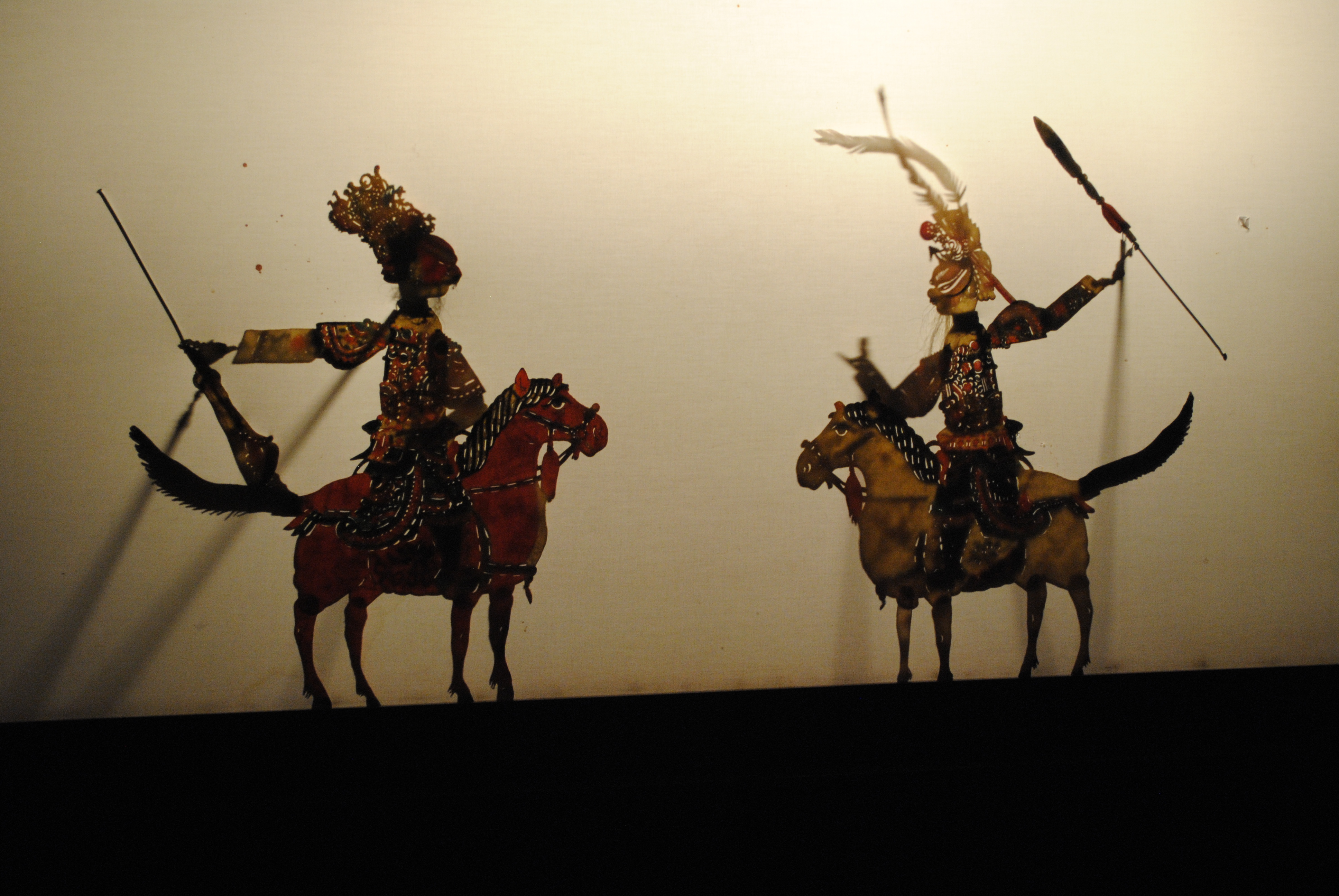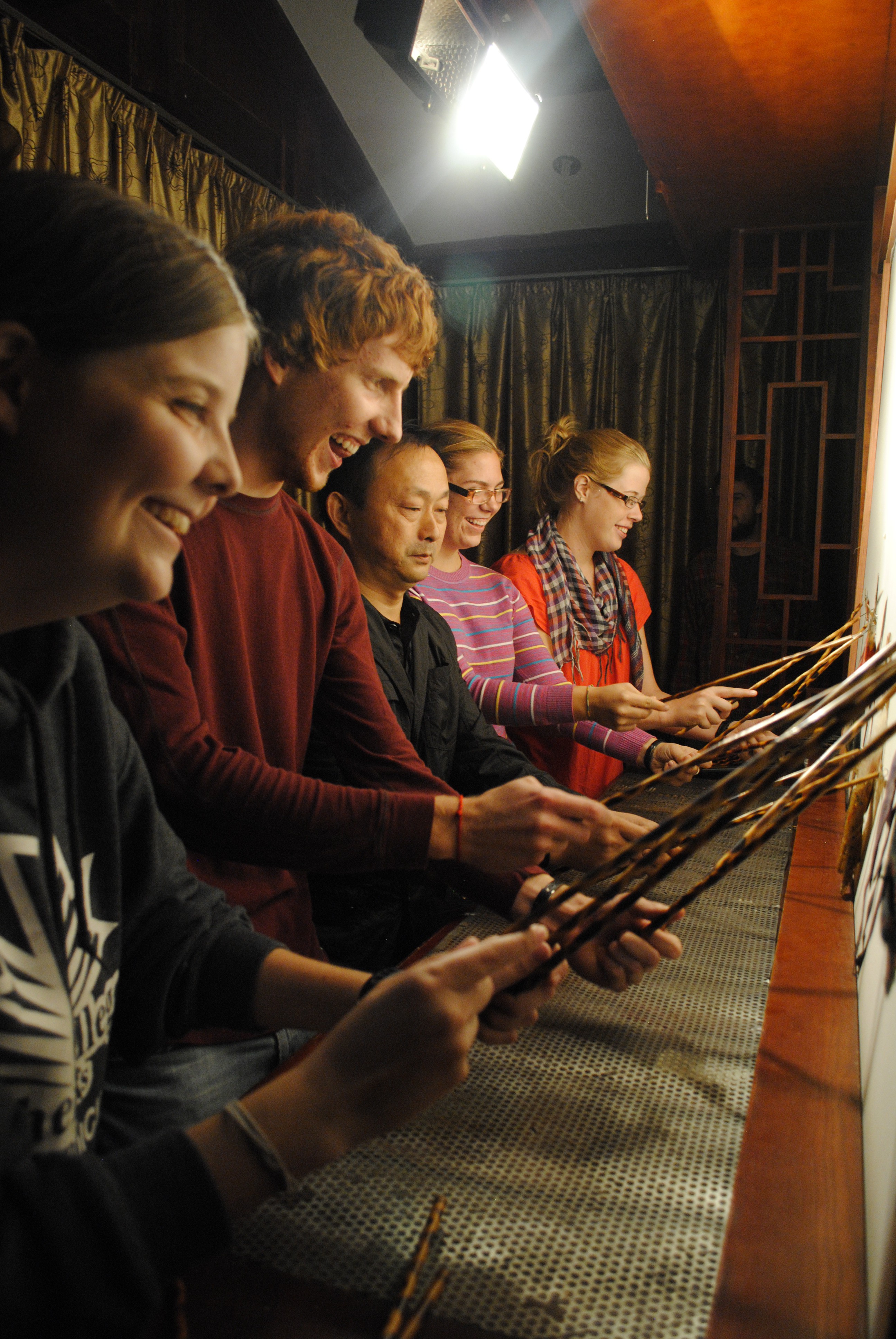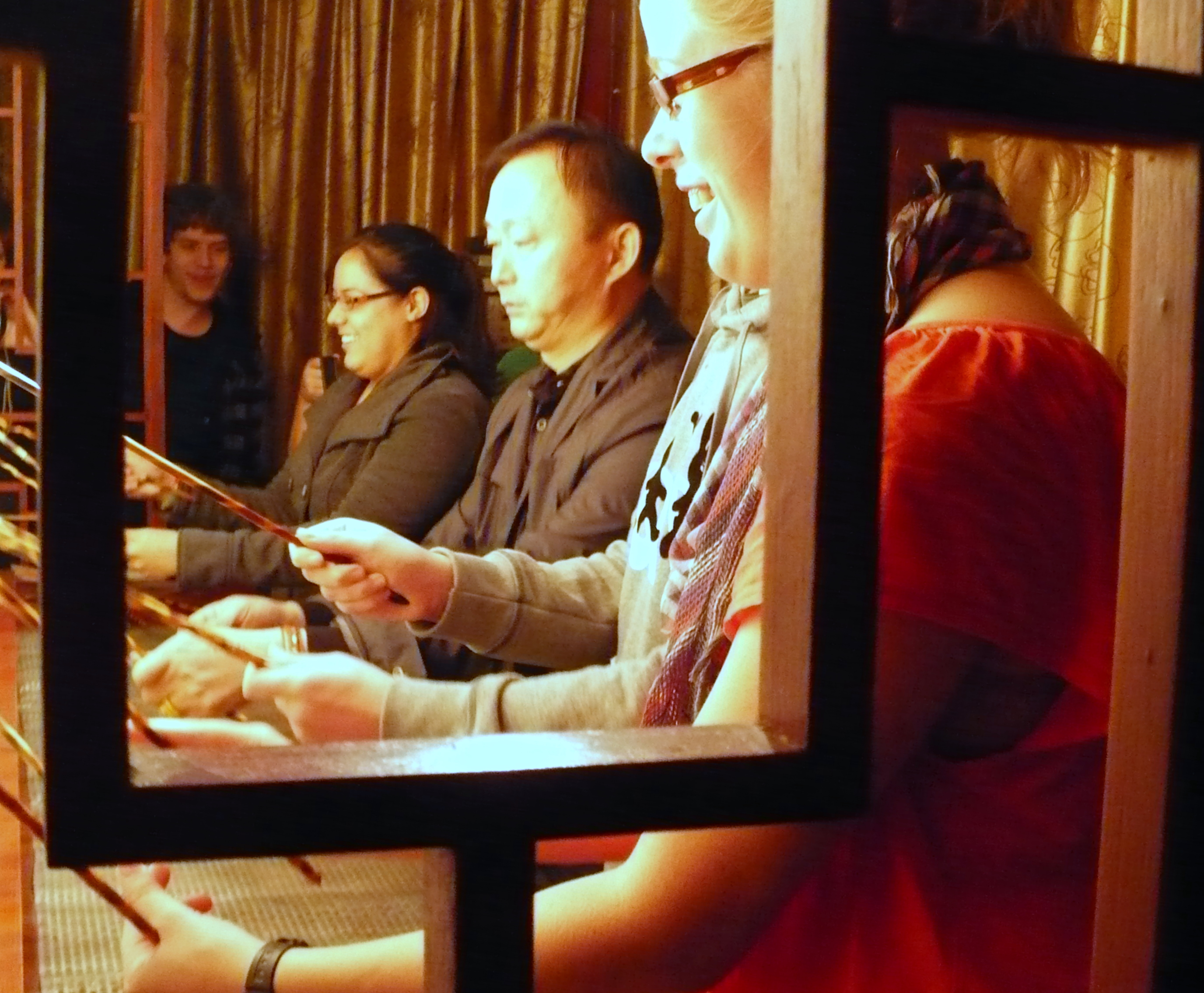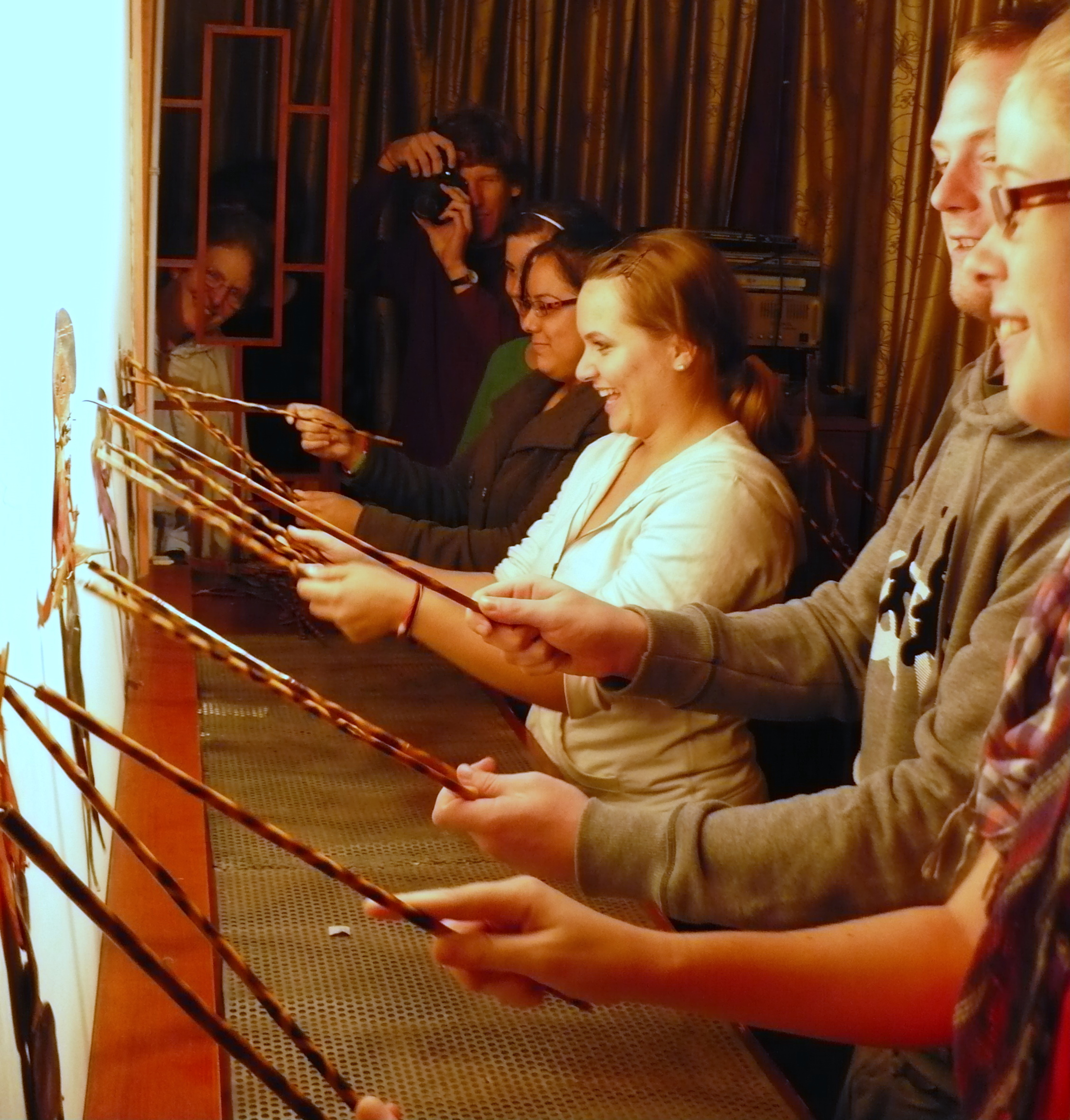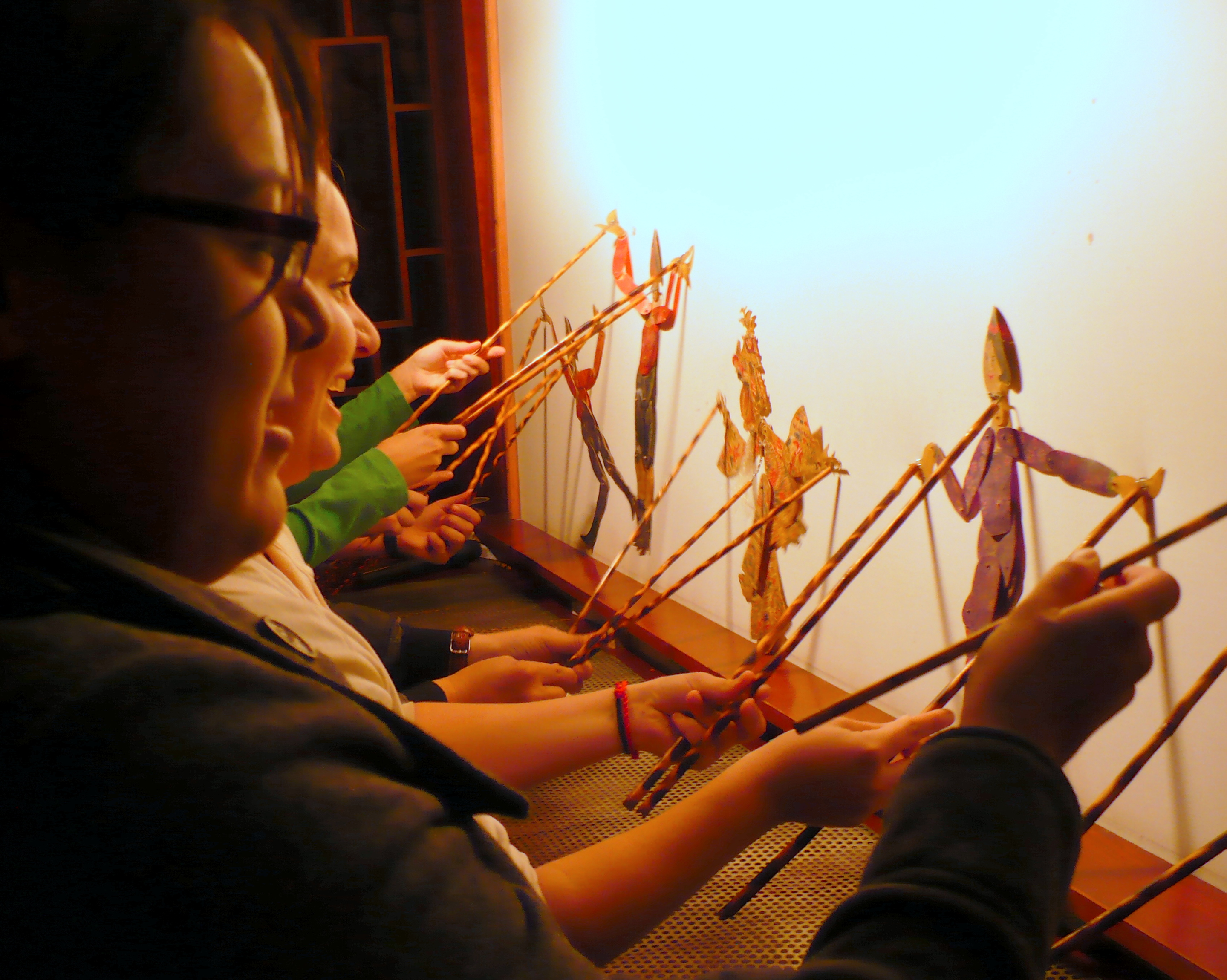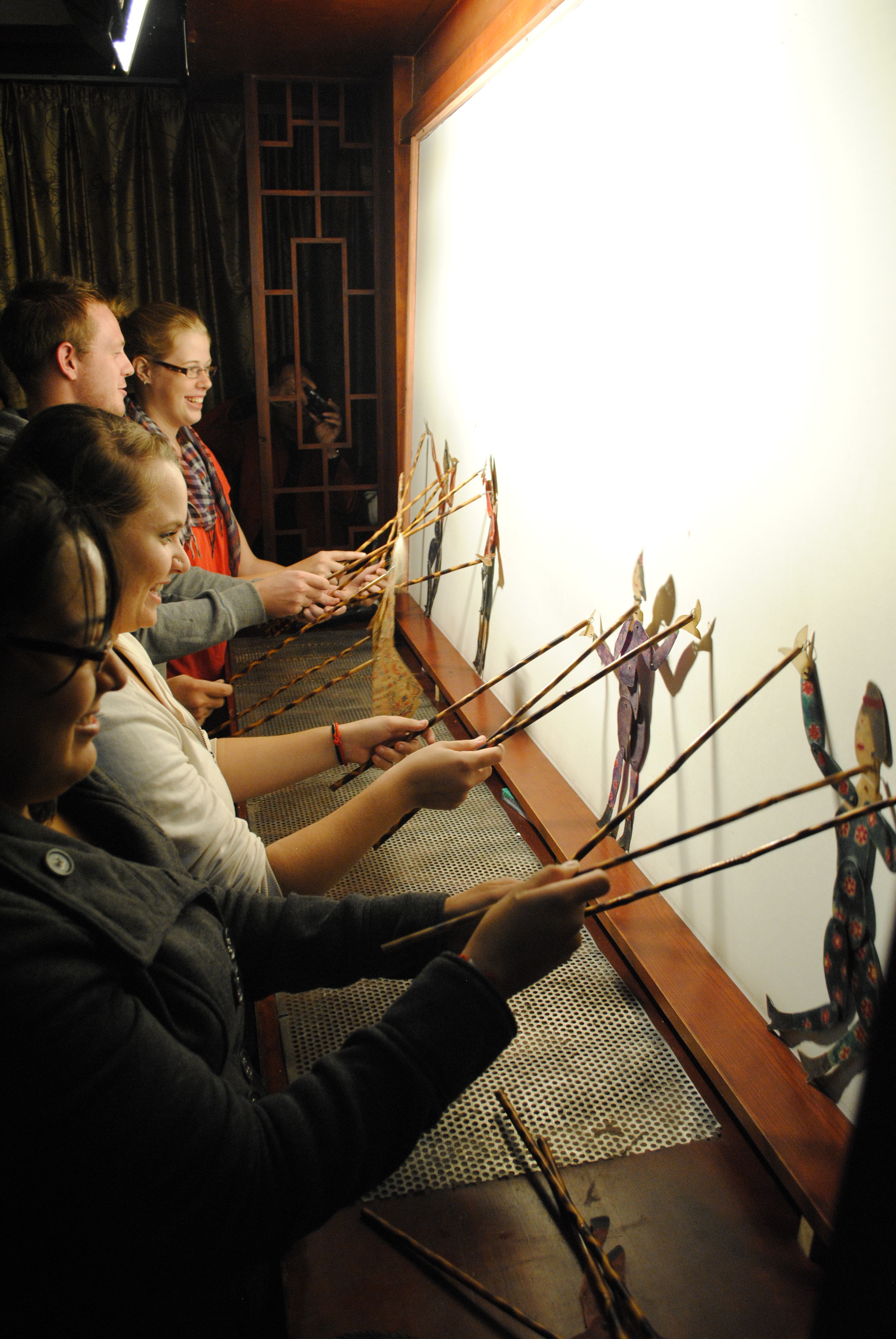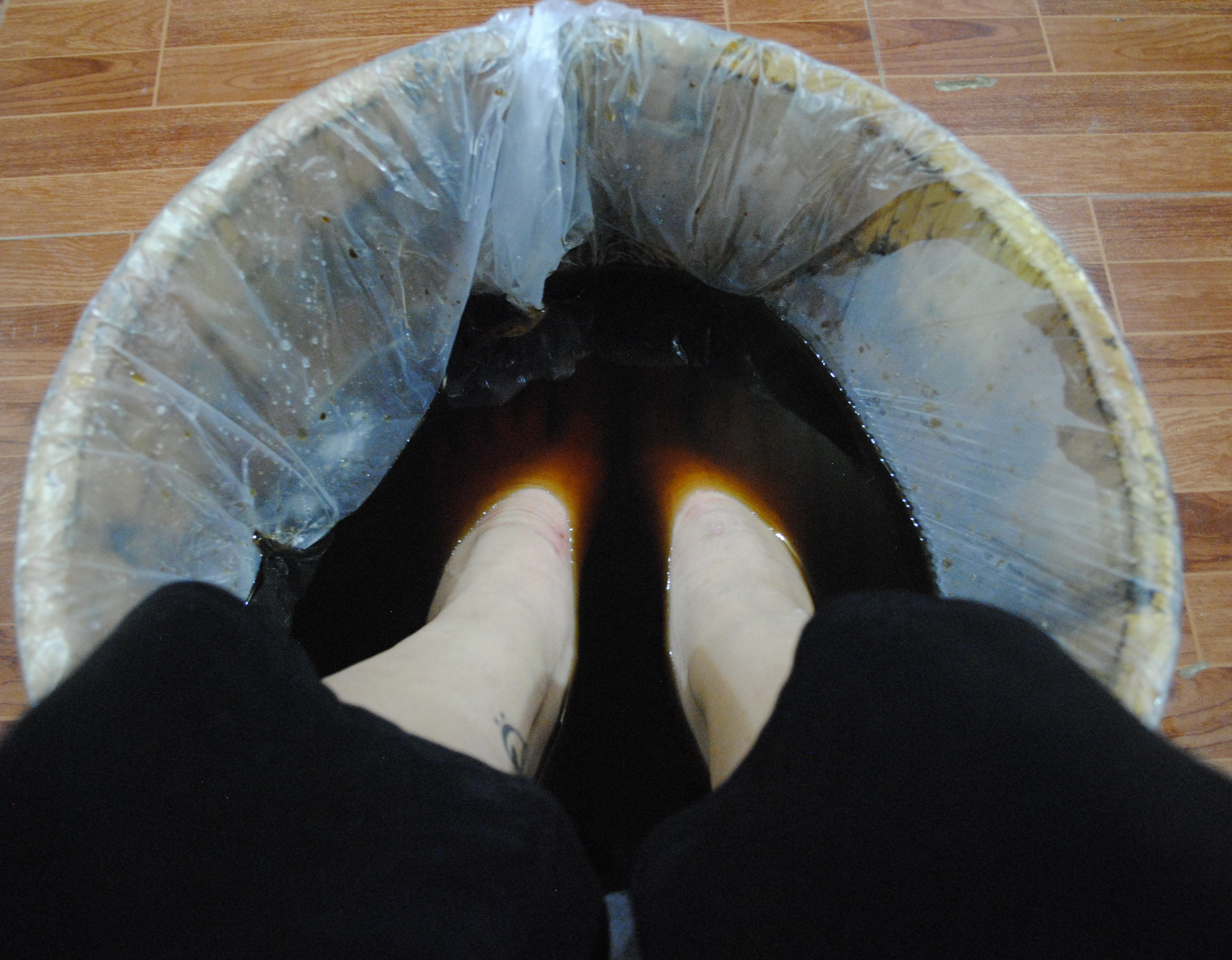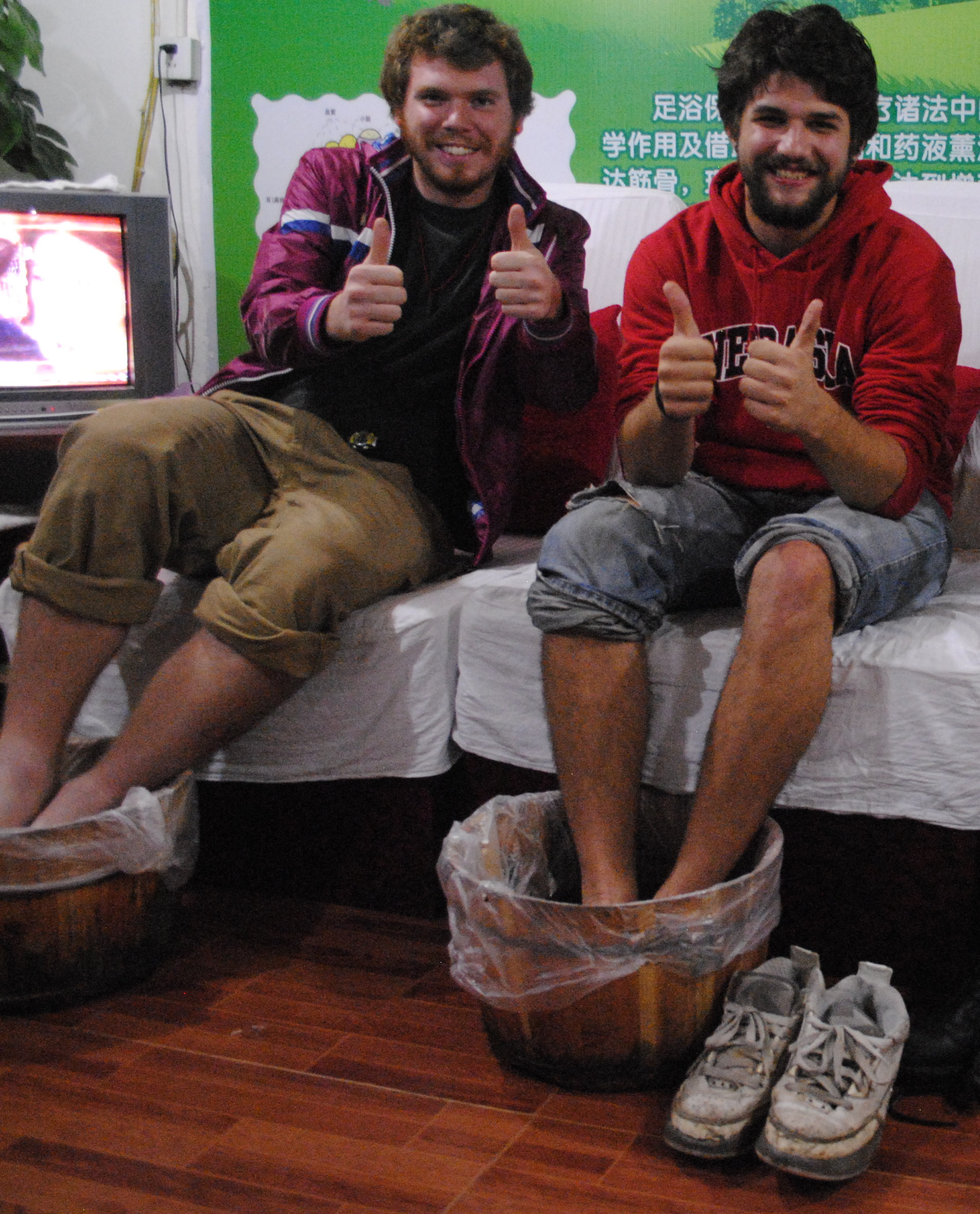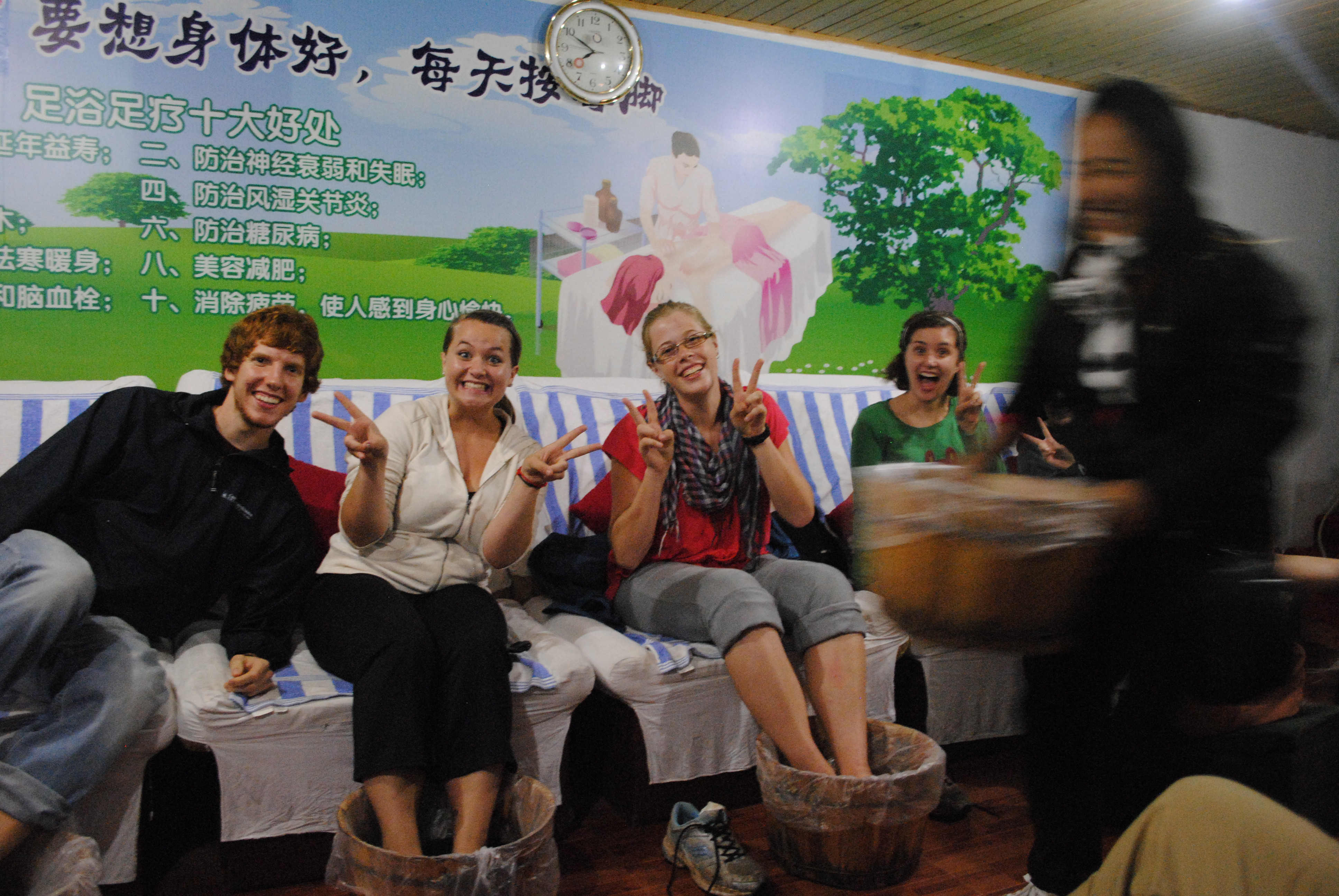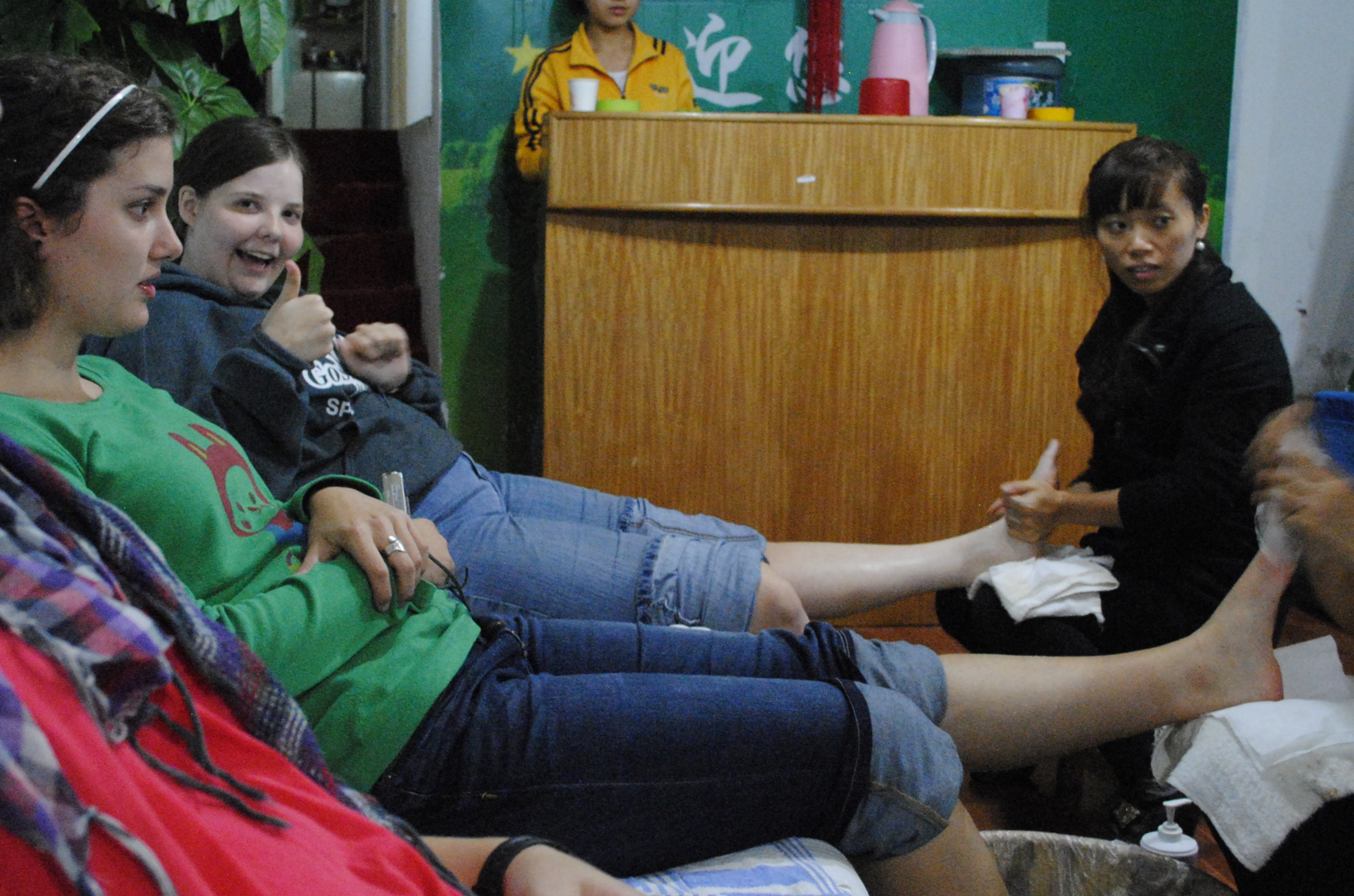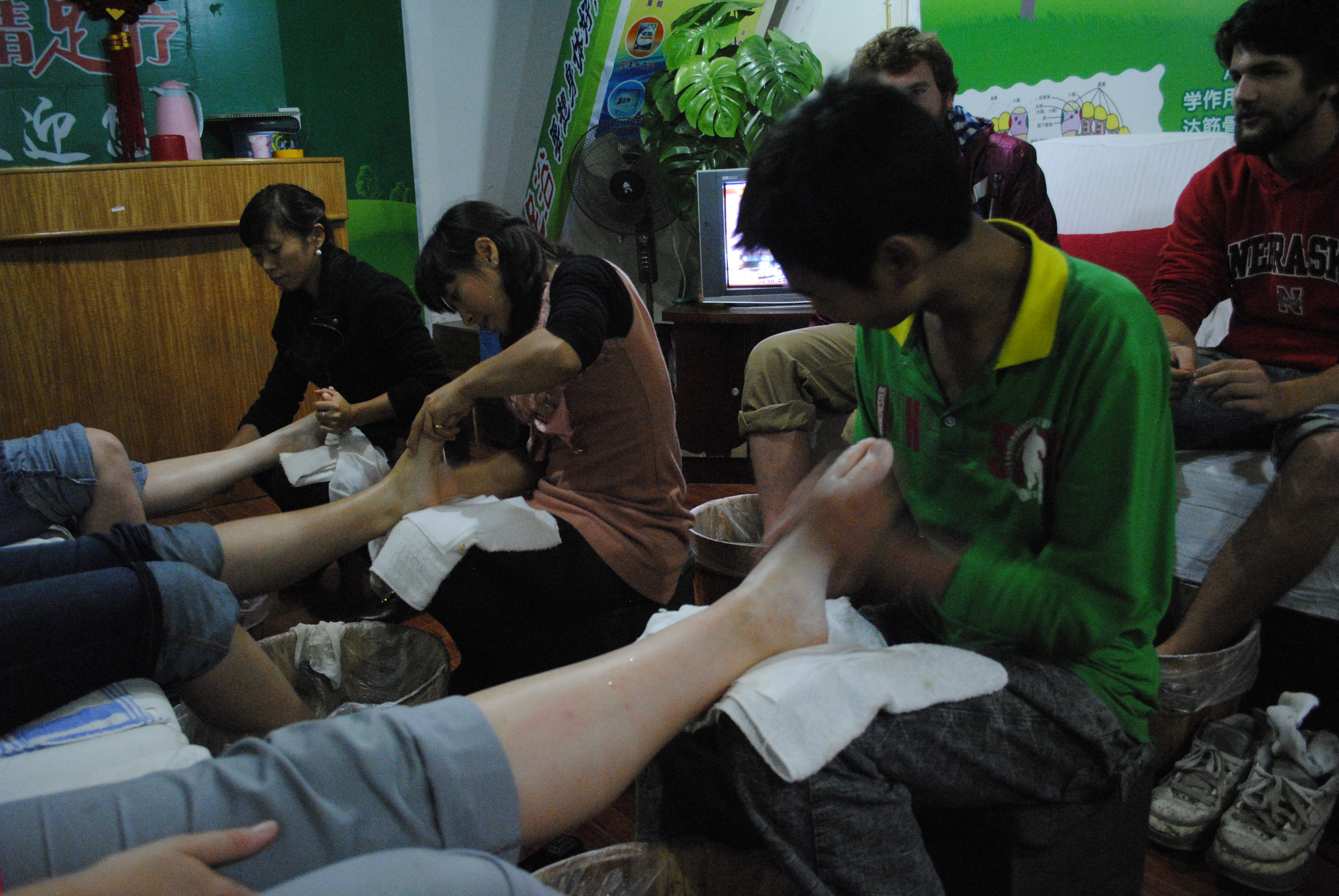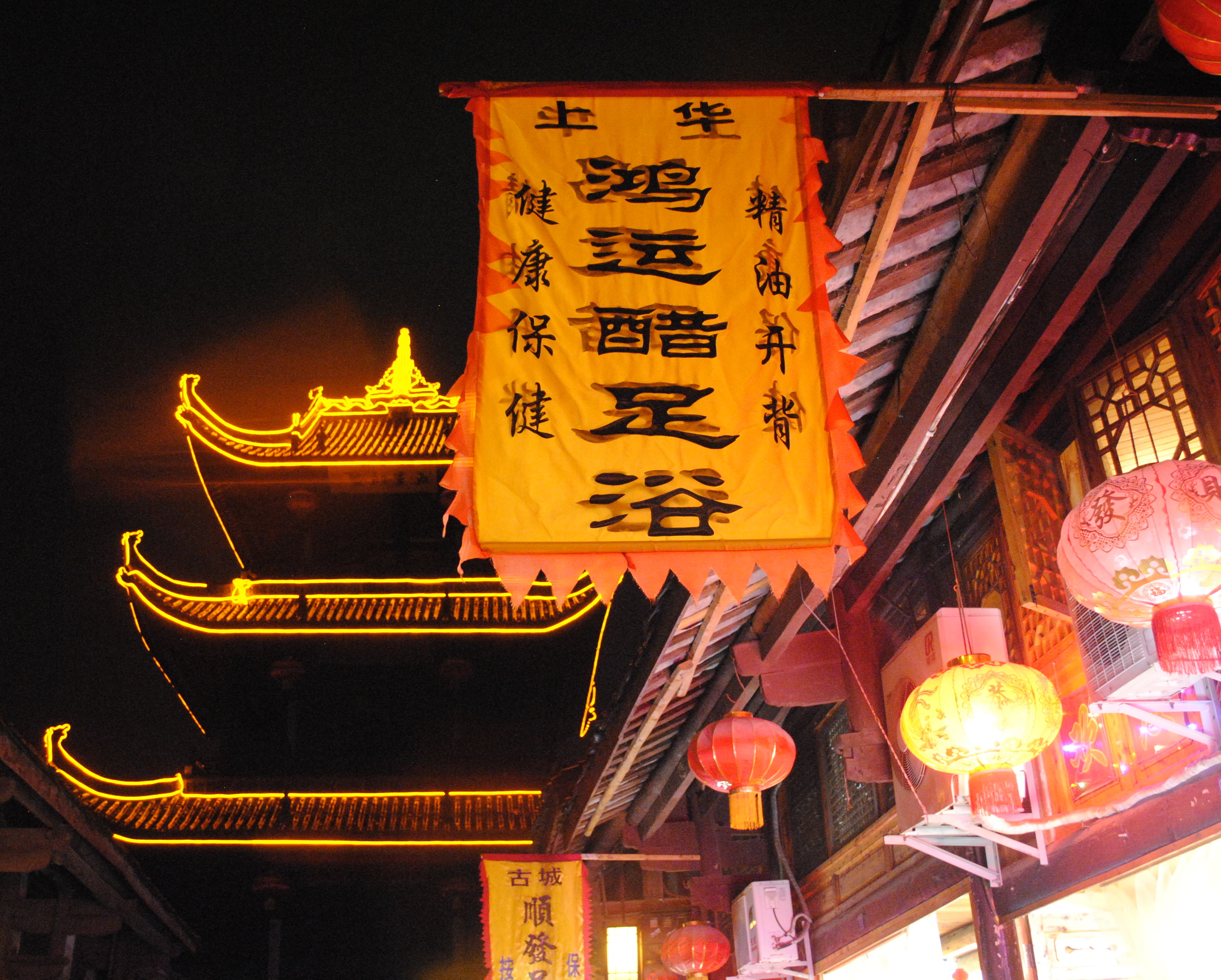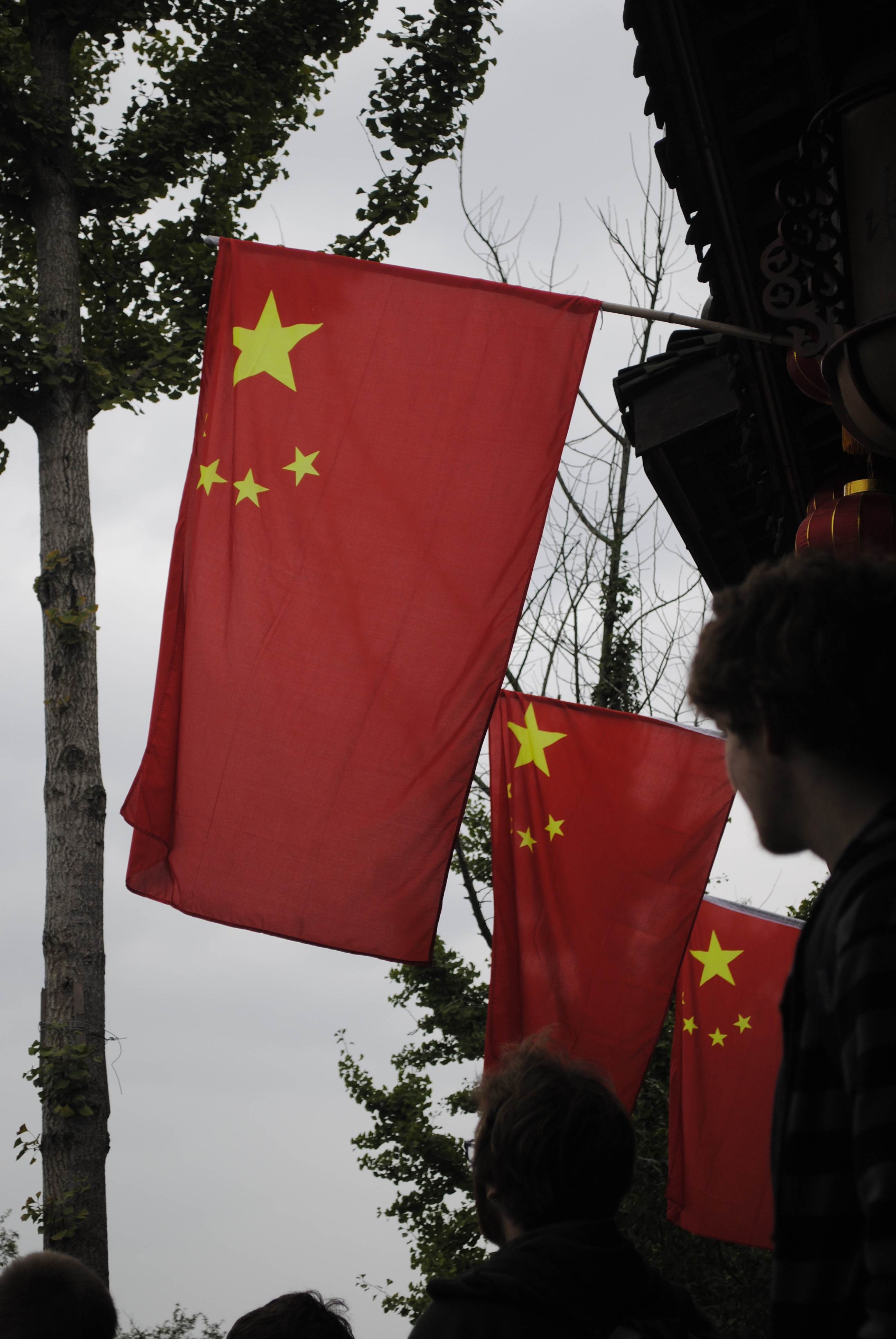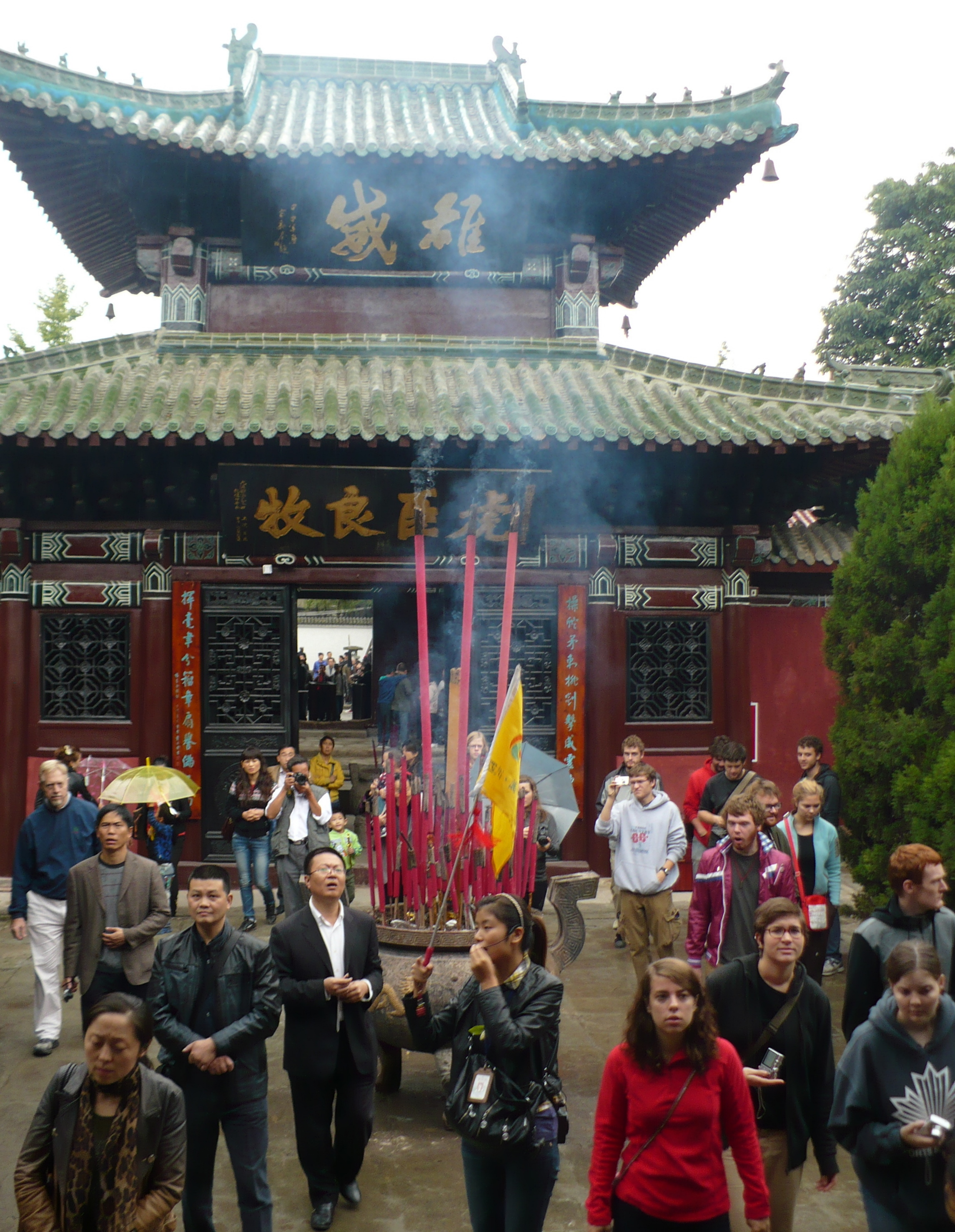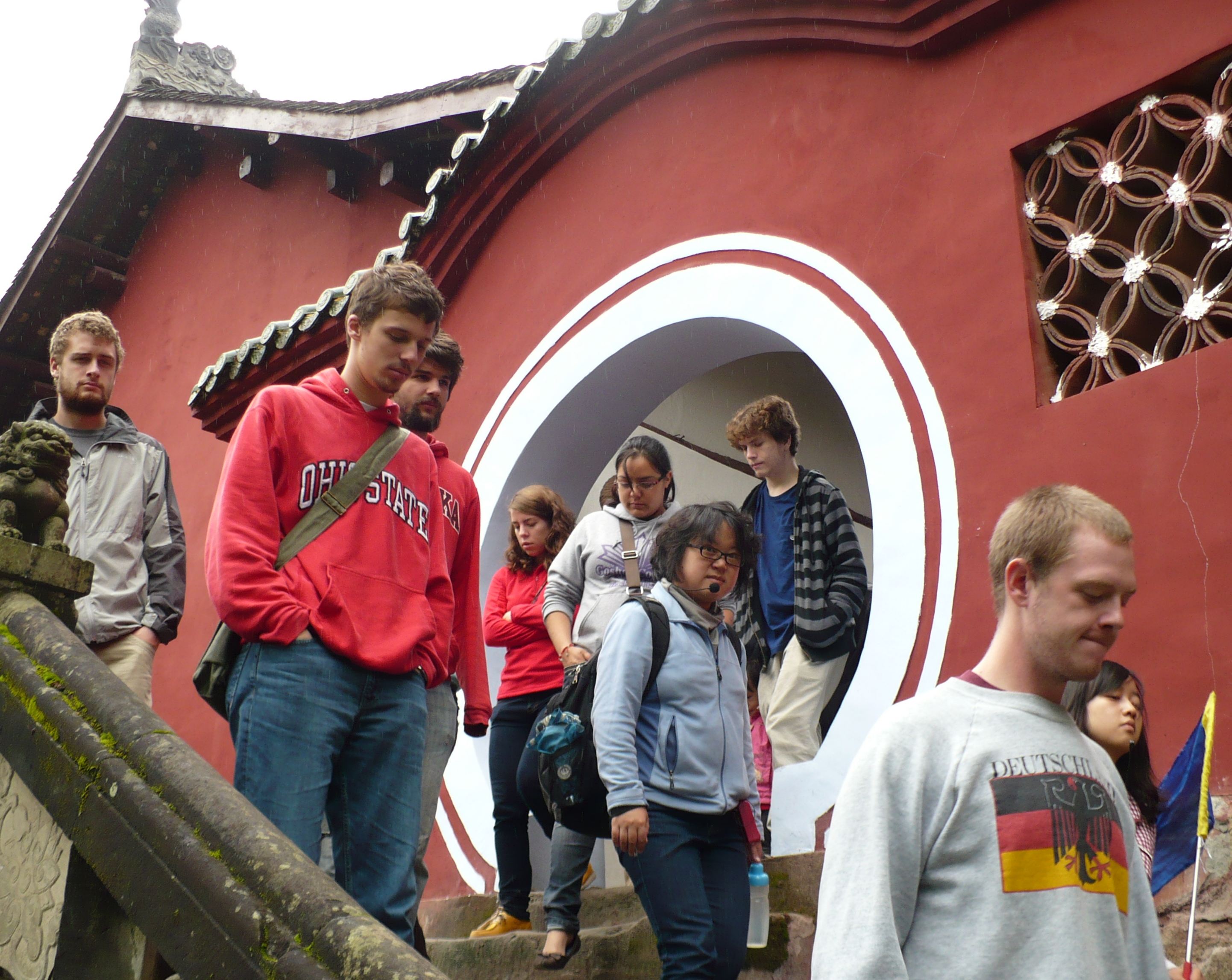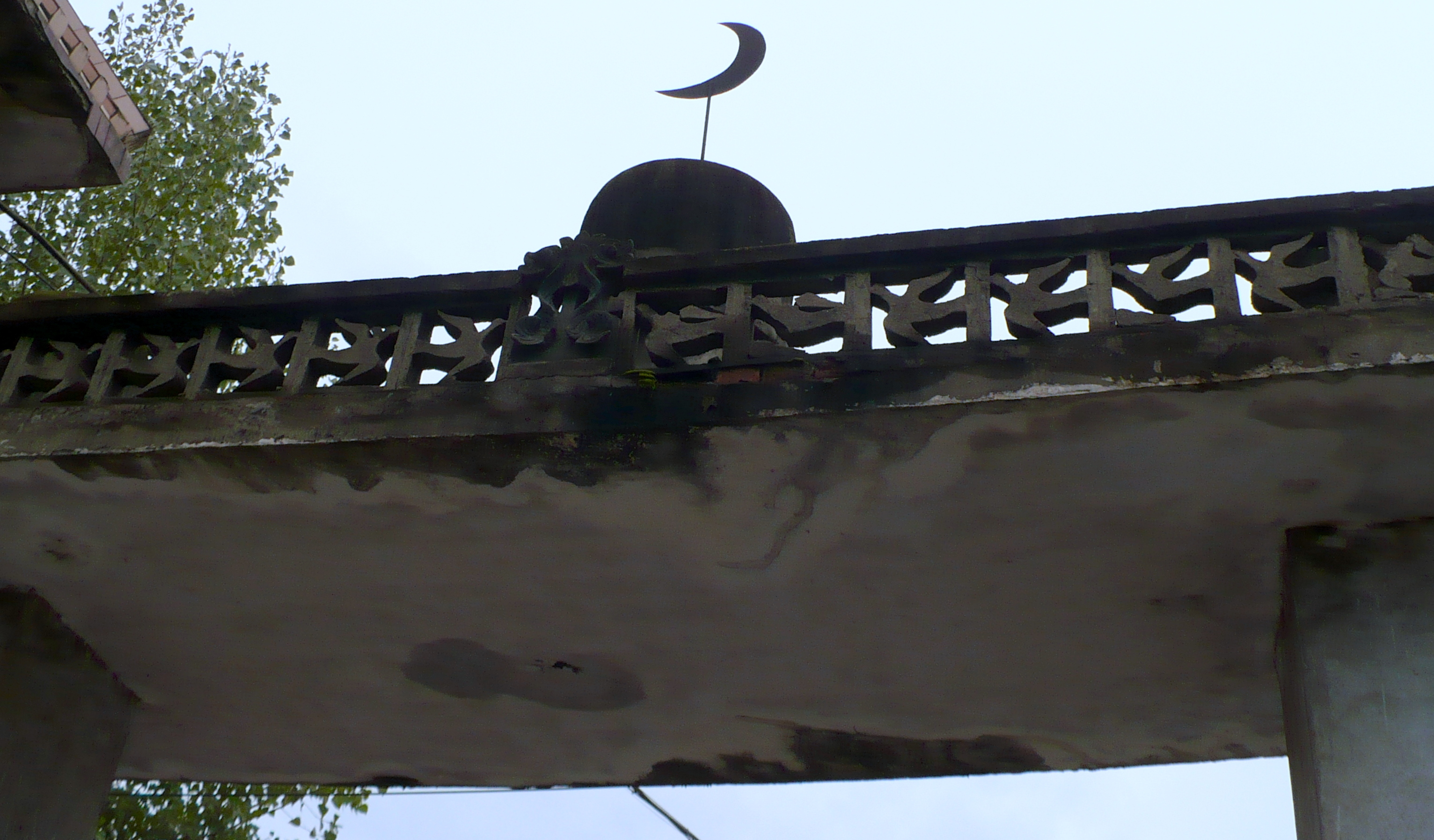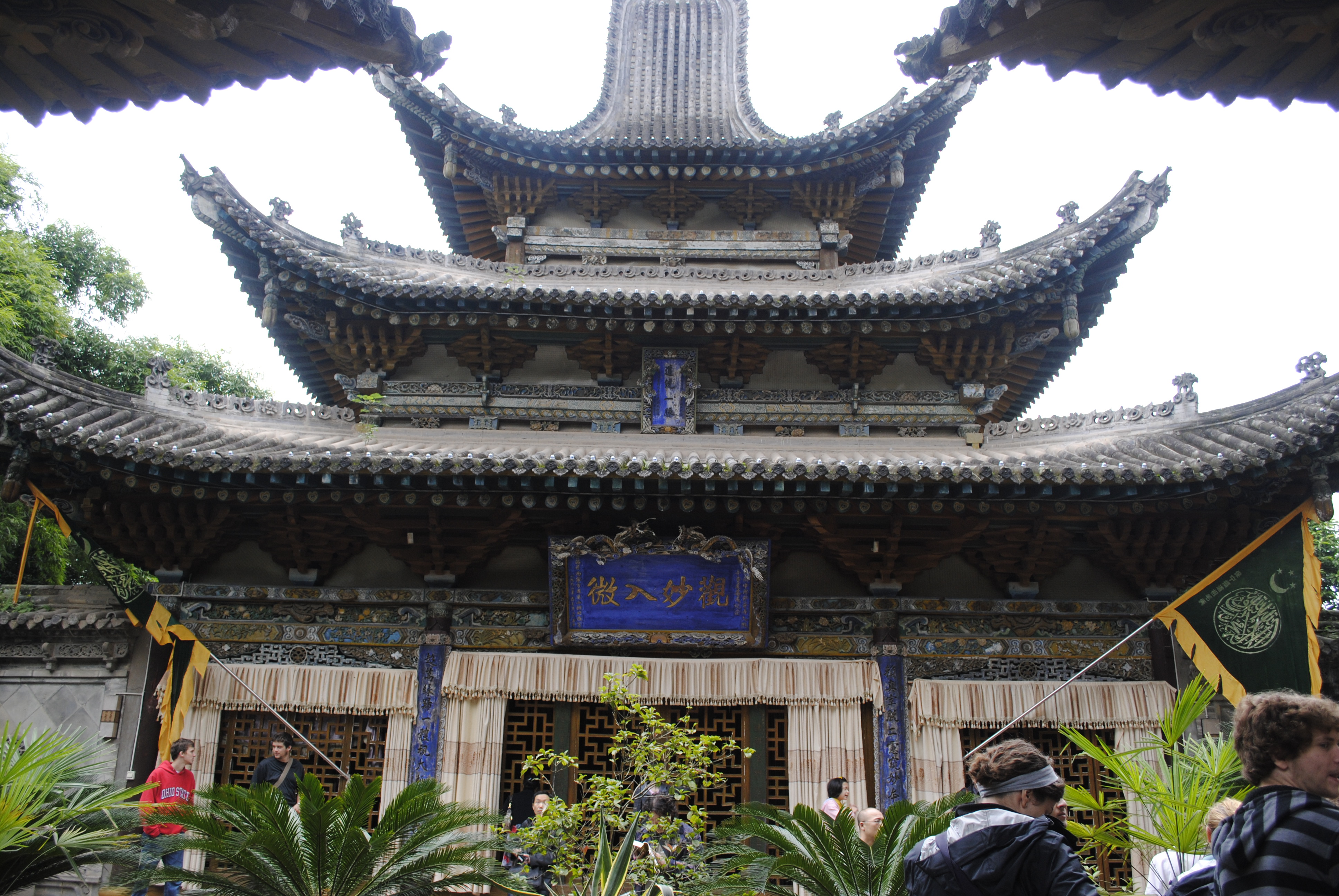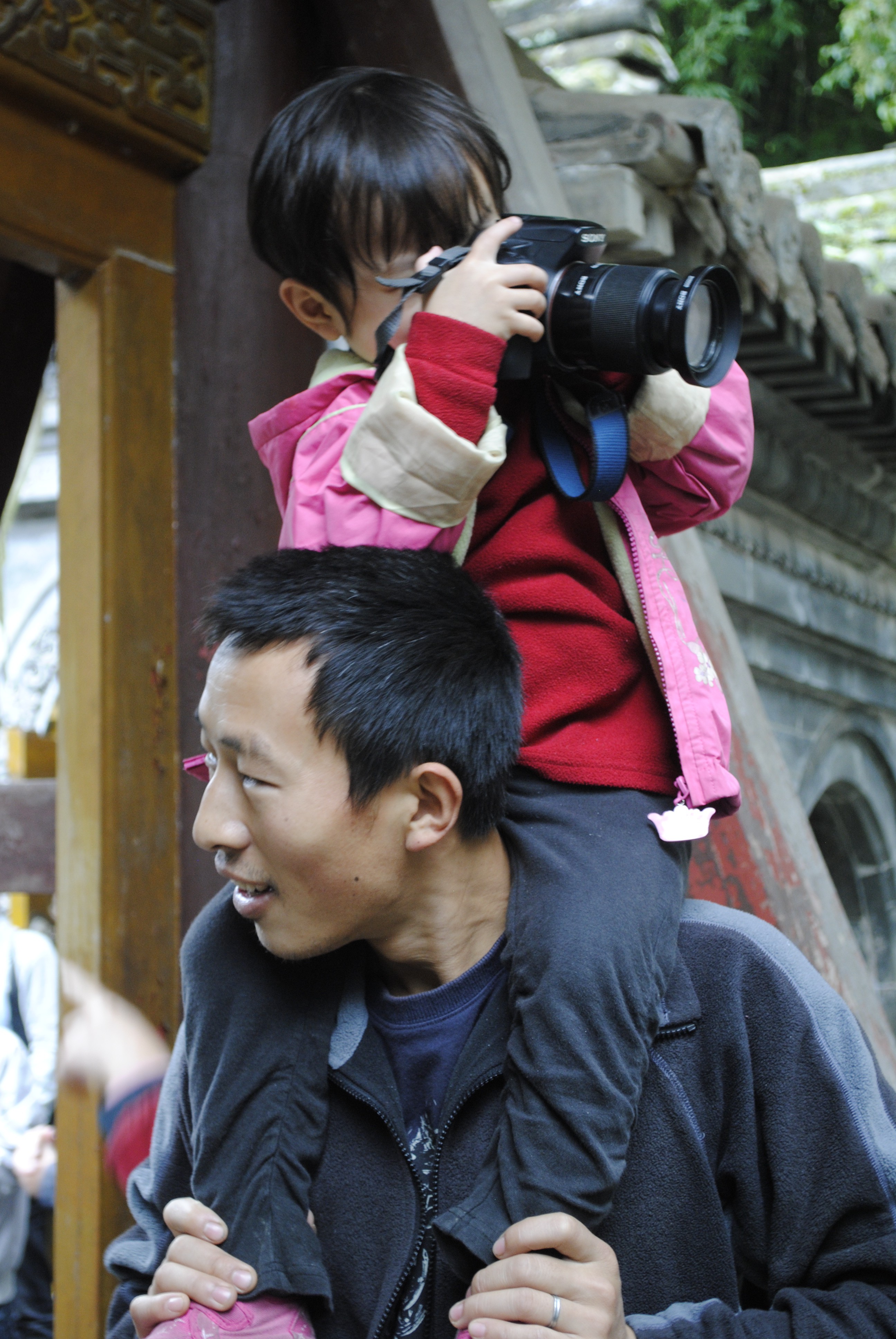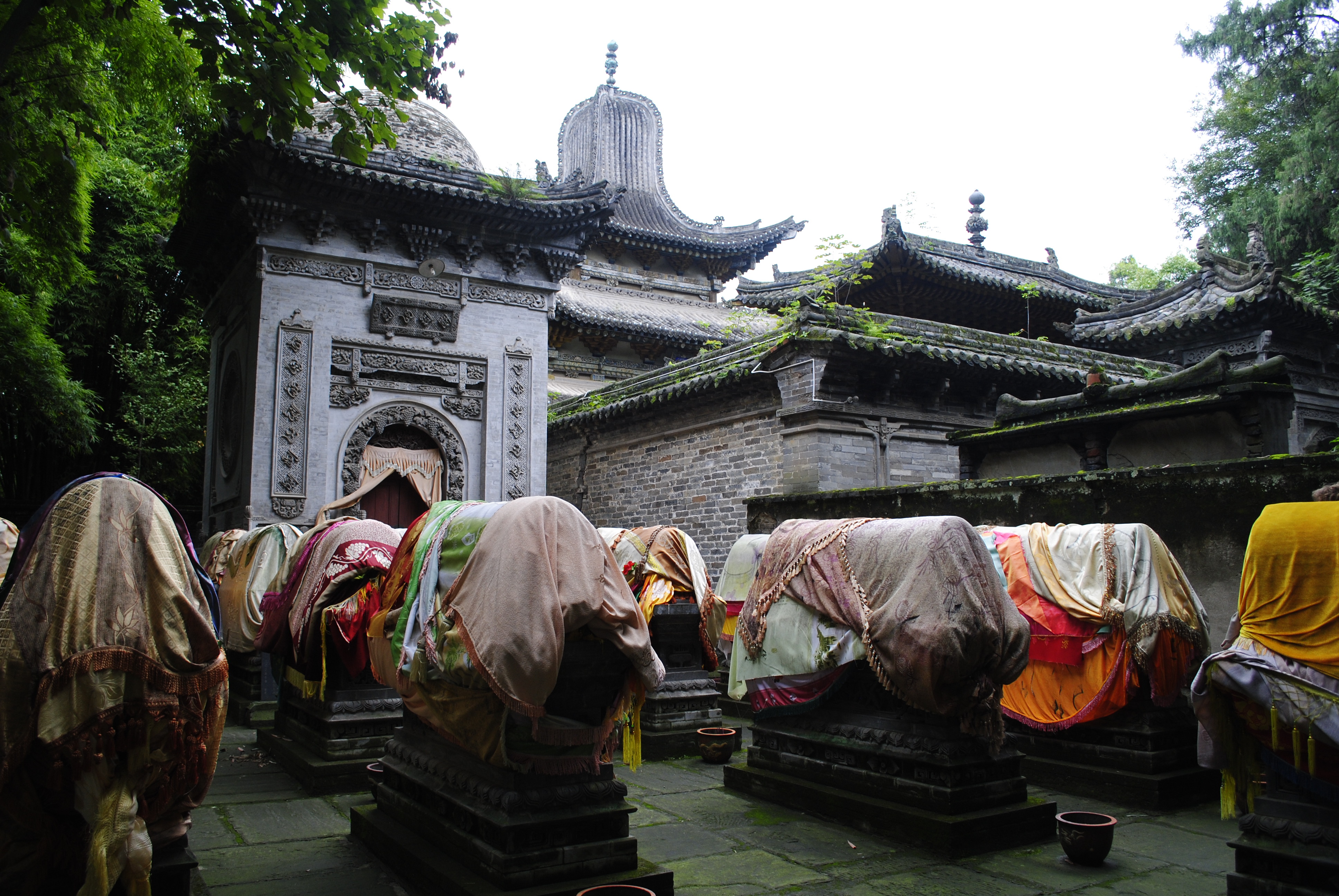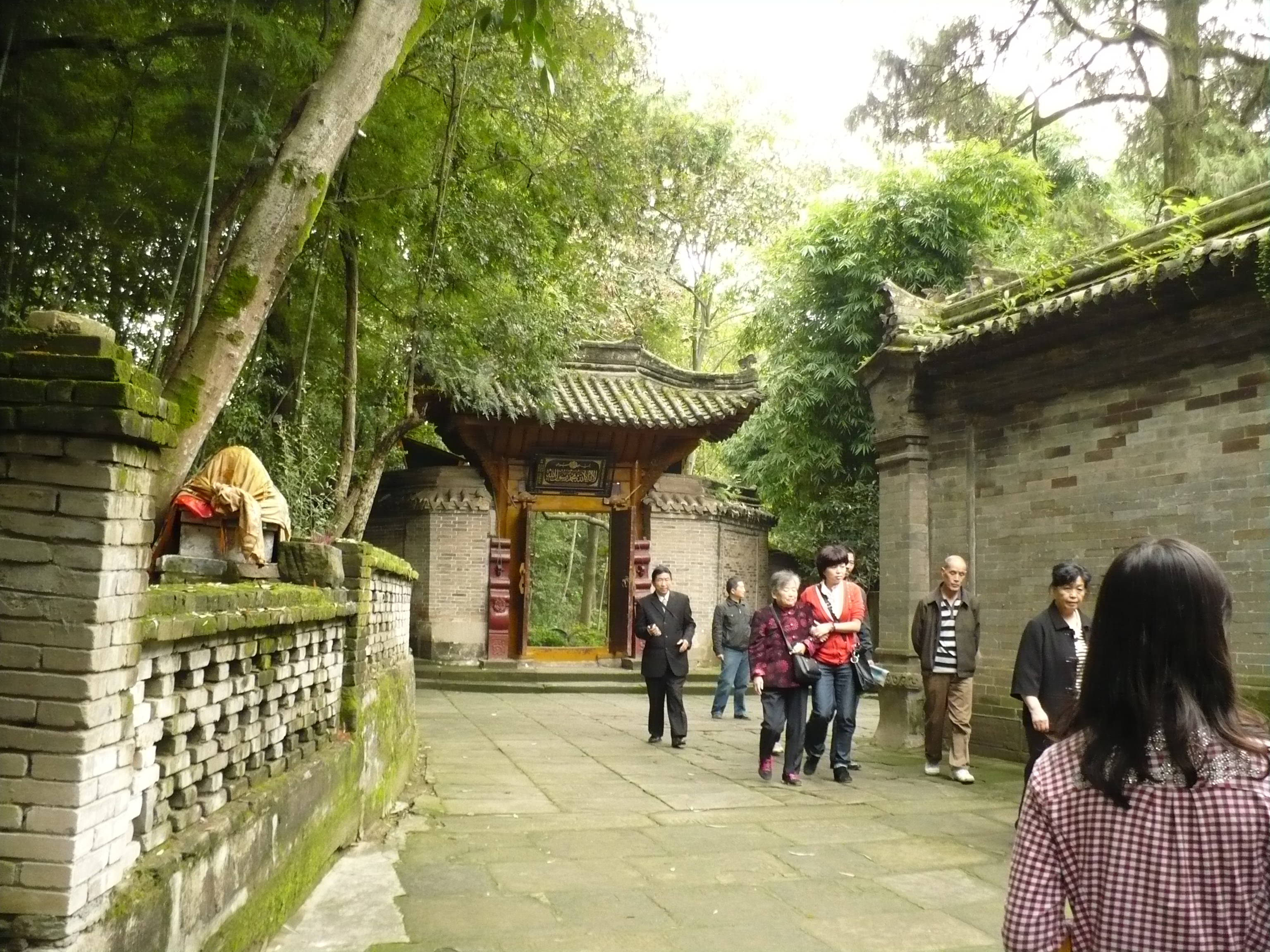Langzhong
On Oct. 2 we boarded a bus for a 2 ½ hour trip to Langzhong. In existence for more than two millennia, the small city has a picturesque, preserved/restored old quarter that attracts many visitors. The city is deemed to have an ideal feng shui location, nestled inside a meander of the Jialing River and with mountains and propitious stone formations surrounding it at four compass points. We had a nice meal before checking into our overnight lodging, an old wharf building. We joined the throngs of other visitors strolling about in a light rain to climb various towers, visit a museum devoted to feng shui and visit one of China’s two remaining imperial examination halls. For centuries the imperial examination system was a necessary route to a position in the civil bureaucracy of China. Students who scored top marks could advance to high levels of government service. Two of our students dressed in garb similar to what students would have worn in the Qing Dynasty (1644-1911) and participated in a playful, perhaps not entirely accurate, recreation of a ceremony marking the end of the examination. In 2008, when the SST group visited Langzhong, they had been filmed for a national TV segment on foreign tourists enjoying China during national holiday week. This year we had two film crews following us: one from the local television station, and also a student film crew from China West Normal University.
We rounded out our first afternoon by visiting a short concert with traditional Chinese instruments and then sought our own light suppers near our hotel. After supper, we took in a Sichuan shadow-puppet show and even got to experiment with operating the puppets ourselves. Before returning to our cedar-walled hotel rooms, some of us sought out another traditional Langzhong activity: a vinegar foot bath and massage.
On Monday morning, we headed out to several more sights. Continuing our Three Kingdoms saga from a little over a week ago, we visited the temple and mausoleum of Zhang Fei (d.221 AD), noted as a wise official and successful warrior. We also visited a Sufi Muslim shrine in town with the dome shaped tomb of one early Muslim leader, now surrounded by many other Sufi style graves. After lunch and a final stroll through the old quarter we returned to Nanchong.
